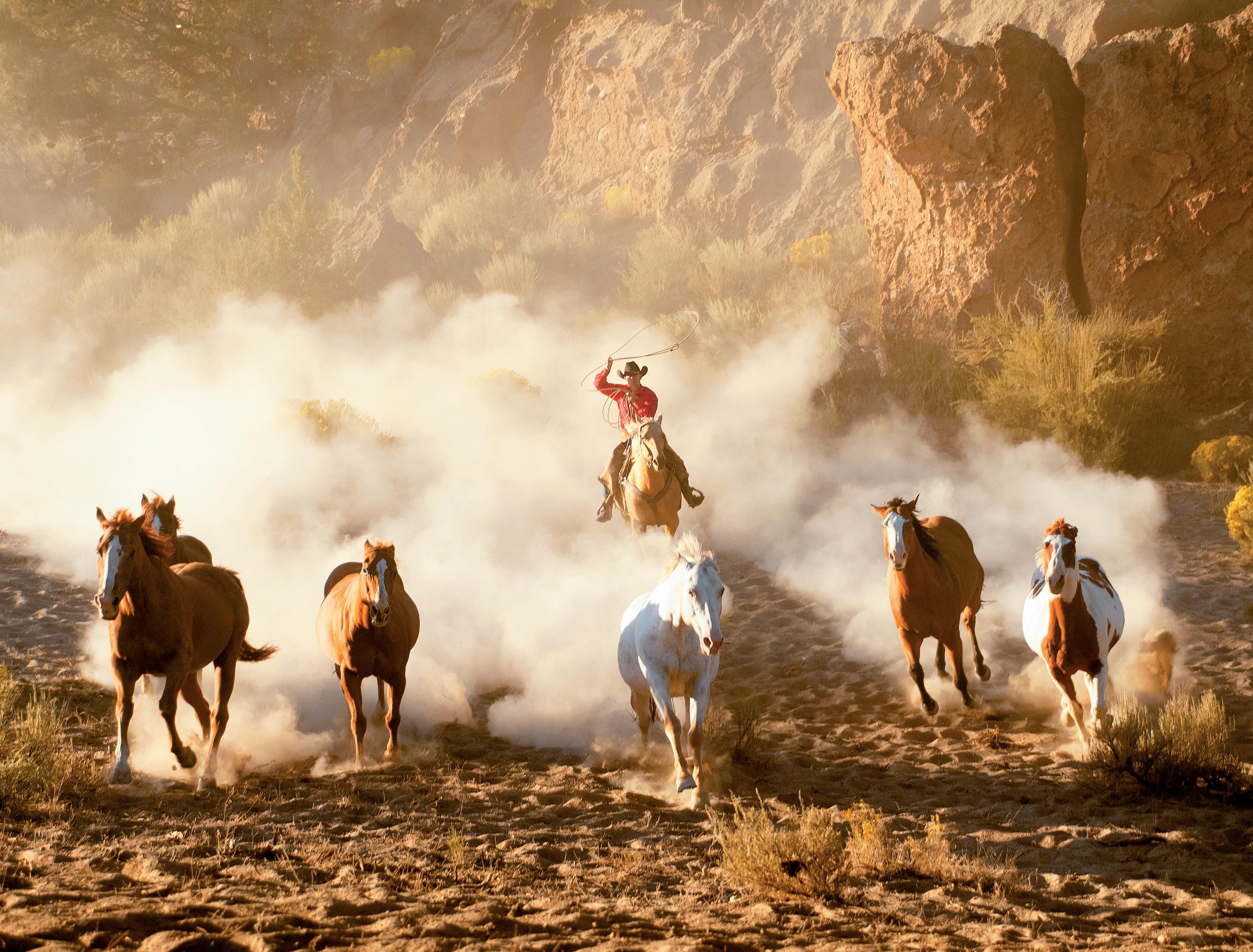SOUTHERN -STYLE
FOR
EVERYONE WHO LOVES THIS COUNTRY

Auntie Anne’s
THE MOVING STORY BEHIND THE FRANCHISE THE MAKING OF THE NATIONAL WWI MEMORIAL

SOUTHERN -STYLE
FOR

Auntie Anne’s
THE MOVING STORY BEHIND THE FRANCHISE THE MAKING OF THE NATIONAL WWI MEMORIAL
For decades, he’s graced our TV screens. What keeps Mario Lopez going? Family, faith, and a tireless entrepreneurial spirit

The wonderful purity of nature at this season is a most pleasing fact. Every decayed stump and moss-grown stone and rail, and the dead leaves of autumn, are concealed by a clean napkin of snow. In the bare felds and tinkling woods, see what virtue survives. In the coldest and bleakest places, the warmest charities still maintain a foothold.

12 | Holiday Cheer
The fve best places to experience the holiday spirit.
14 | Super Mario
From show business to launching a tequila brand, Mario Lopez is fring on all cylinders. What else does he have planned? (Hint: It includes his lovable family.)
22 | Beauty From Within
A beauty pageant’s unique mission ignites a young woman’s journey of self-discovery.
30 | A Sculptor’s Vision
The artistic process behind Sabin Howard’s creation of the new World War I memorial in Washington.
38 | Auntie Anne’s Courage
The iconic pretzel brand was created out of one woman’s healing from trauma.
42 | A Future Waiting to Be Built
One organization has found a meaningful way to thank veterans who’ve made incredible sacrifces.
44 | The Season of Giving
Knitters and crocheters join forces to spread warmth to the less fortunate.

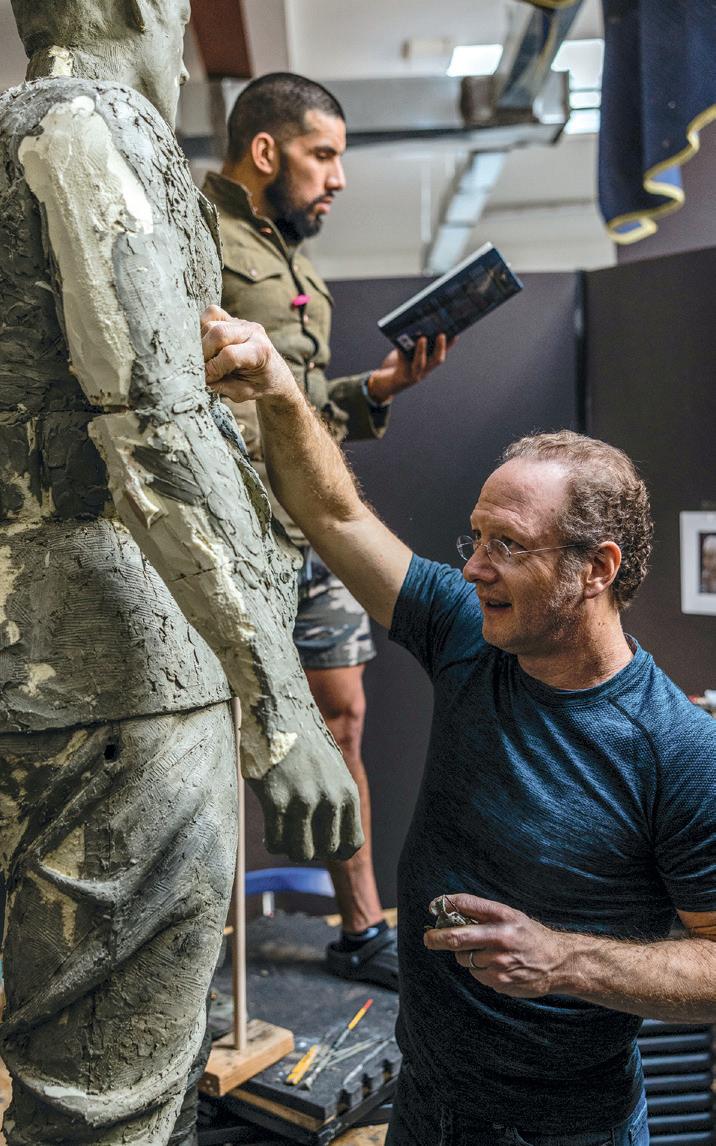
46 | Pearl Harbor Prophecy
Gen. “Billy” Mitchell foresaw the critical role aviation would play in Pacifc naval battles.
50 | The Richmond Underground
An Abolitionist and loyal Unionist, Elizabeth Van Lew orchestrated a spy ring to undermine the Confederate cause during the Civil War.
54 | Christmas at the President’s House
Beloved holiday traditions celebrated at the White House through the ages.

58 | What Is True Art?
World-renowned artist Igor V. Babailov emphasizes an artist’s moral obligation to realistically reproduce the beauty of God’s creation.
64 | The People’s Poet
Jay Parini’s new book on Robert Frost is an introduction to the “folk poet” who used nature to frame the philosophical and spiritual depths of the human experience.
68 | Great Singers’ Techniques
“Great Singers on Great Singing,” written by opera legend Jerome Hines, is a priceless collection of advice for all singers.
70 | Why I Love America
When Tony Batteford heard about his father’s experience in the Vietnam War, it made him realize what America symbolizes to the world.
72 | My Family Roots
A wartime mission lef Patricia Conley’s father blind. His determination amid adversity inspires her.


76 | A Diferent Kind of Cooking School
At New York’s League of Kitchens, immigrant women from around the world share their family secrets with home cooks.
84 | Bakers of Christmas Past
A fruitcake to convert the skeptics, and other holiday recipes from the great Southern baking tradition.
90 | Evergreen Joy
A New Jersey Christmas tree farmer takes us behind the scenes.
94 | Keeping It Civil
A crash course on navigating tricky conversations with grace.
98 | Rx for Life
Dr. Amy Beard, who cured her chronic illness through functional medicine, teaches people to heal from within.
PUBLISHER
Dana Cheng, PhD
EDITORIAL
Editor-In-Chief
Managing Editor
Lifestyle Editor
History Editor
Arts & Letters Editors
Editor-At-Large
Production Manager
Channaly Philipp
Annie Wu
Crystal Shi
Sharon Kilarski
Sharon Kilarski
Jennifer Schneider
Tynan Beatty
Astrid Wang
CREATIVE
Lead Designer Designers
Photographers Illustrator
Jane Russo
Sunny Lo
Karen Tang
Samira Bouaou
Adhiraj Chakrabarti
Biba Kayewich
MARKETING & SALES
Marketing Manager
Marketing Assistant
Sales Director
Sales Assistant
Brett Chudá
Jennifer Tseng
Ellen Wang
Onon Otgonbayar
CONTRIBUTORS
Sandy Lindsey, Tim Johnson, Kenneth LaFave, Ileana Alescio, Hazel Atkins, Krista Thomas, Je f Minick, Dustin Bass, Andria Pressel, Andrew Benson Brown, Igor V. Babailov, Ti f any Brannan, Tony Batteford, Patricia Conley, Randy Tatano, Annie Holmquist, Amy Denney
American Essence (USPS 24810) is published bimonthly by Bright Magazine Group at 5 Penn Plz. Fl.8, New York, NY 10001. Periodicals postage is paid at New York, NY. Postmaster: Send address changes to American Essence, 5 Penn Plz. Fl.8, New York, NY 10001.
General Inquiries: AmericanEssence.net/help
Advertisement Inquiries: ad@americanessence.com
Submissions: editor@americanessencemag.com
www.AmericanEssence.com

Dear Readers,

What a wondrous thing is the spirit of generosity. As we ofer gifs of the hands and heart meant to better others’ lives, these acts in turn make our own lives fuller and richer.
These gifs might be ones of warmth and shelter— from mittens and blankets lovingly knitted by volunteers for the needy (PAGE 44) to adaptive homes built for veterans (PAGE 42). Or they might be gifs that feed the soul. Read about sculptor Sabin Howard’s work on the new National World War I Memorial in Washington (PAGE 30) and painter Igor Babailov’s refections on the role of beauty and art (PAGE 58).
As we near the holiday season, which invites us to be grateful for family and friends, we visit TV personality and actor Mario Lopez (PAGE 14). He has taken on many entrepreneurial endeavors, but family always comes frst. It’s ftting, then, that his latest project is a heartwarming Christmas flm also starring his wife, Courtney, and son Dominic. It’s a family afair through and through.
Wishing you and yours a happy holiday season,

Editor-In-Chief Editor@AmericanEssence.com
Indulge in the fnest at DAYES Cofee Roasters.
We’re proud to introduce our specialty, enzyme fermented cofee. This innovative cofee is low in cafeine, low in acidity, gentle on digestion, mycotoxin free, and deliciously smooth - with notes of dark chocolate, buterscotch, brown sugar, and nutiness. Fermented with 50 enzymes, each premium quality bean is specially crafed and roasted at our own cofee shop in Middletown, New York.

healthier choice for your morning brew!




or ground.
By Sandy Lindsey


Breckenridge, Colo.
Dec. 12 – 14
According to legend, Ullr, the Norse god of snow, covered the Earth every winter to protect it from harm, thereby unintentionally creating the sports of skiing and sledding, among other winter delights. Ullr Fest is a three-day celebration with a huge bonfire, the longest Shotski toast to encourage Ullr to be generous with the white stuff on the slopes, and more. GoBreck.com/event/ullr-fest
Charleston, S.C.
Dec. 8
Heritage Fire has a mission: to bring together live-fire cooking, family farms, and local chefs from diverse destinations. The all-inclusive Charleston event brings together more than 20 top Lowcountry chefs, each presenting a distinctive dish, as well as sommeliers, brewers, and barkeeps. It’s a relaxing day of samplings designed to impress, with ancient Spanish moss-draped trees as a scenic backdrop. HeritageFireTour.com
Holiday Extravaganza FRANKENMUTH ‘LITTLE BAVARIA’ CHRISTMAS
Frankenmuth, Mich.
Nov. 29 – Dec. 31
Michigan’s Little Bavaria gets an extra twinkle at Christmas. There’s a spectacular, 44-foot-tall musical tree where 23,000 lights dance to favorite holiday tunes, in addition to a holiday ice rink, horse-drawn carriages, a boutiquefilled Bavarian village, the world’s largest Christmas store (the size of 1.5 football fields), and family-style chicken dinners (a local specialty).
Frankenmuth.org/blog/a-frankenmuthchristmas
Ring Out the Old IDAHO POTATO DROP
Boise, Idaho Dec. 31
On New Year’s Eve, join Idaho’s famous GlowTato as it begins its dramatic ascent at 6 p.m. It kicks off an evening of great music, a ski and snowboard exhibition, games, raffles, yummy local eats, hot toddies, photo ops with Spuddy Buddy the mascot, and more. At midnight, GlowTato drops like the hot potato it is, accompanied by breathtaking fireworks.
IdahoPotatoDrop.com
Happy New Year, California Style 136th PASADENA TOURNAMENT OF ROSES PARADE
Pasadena, Calif.
Jan. 1
From the first orange-blossom-filled horse-drawn carriages that paraded down the streets over a century ago to today’s state-of-the-art, technologicallyenhanced floats, Southern California has celebrated each new year with an exuberant display of flowers, marching bands, pageantry, and community spirit. The 5.5 mile route down Colorado Boulevard means that there are plenty of great viewing locations.
TournamentOfRoses.com/about/about-roseparade
Festive Fort
Fort Lauderdale, Fla.
Dec. 14
How does one celebrate Christmas in the “Yachting Capital of the World”? By lining up over 100 dazzlingly lit vessels— from private boats to party yachts—to parade down a 12-mile route along the Intracoastal Waterway. The path passes by attractions like the historic Stranahan House and Lake Santa Barbara in Pompano Beach. The parade kicks off with a charming flotilla of manually powered kayaks. WinterfestParade.com







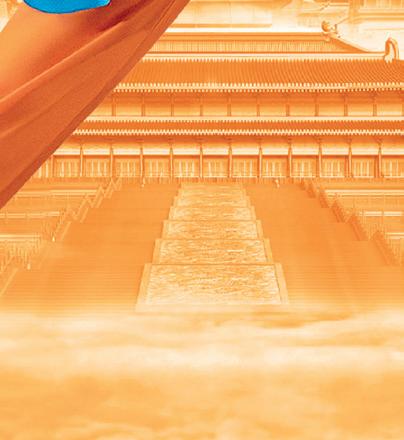



Book your tickets to

very enlightening!”
—Tony Robbins, motivational speaker

“It was faultless… All with such expressive movement... I think we’ve gone to heaven!”

—Wayne Sleep OBE, legendary british dancer
“There is a massive power in this. It brings great hope...”
—Daniel Herman, former Minister of Culture of the Czech Republic

“I encourage everyone to see and all of us to learn from.”
—Donna
Karan, founder of DKNY

Astronauts Jim Lovell, Frank Borman, and William Anders discuss at length their Apollo 8 mission, the first manned space-flight to safely orbit the moon and observe its surface with unaided eyes. This gave Anders the opportunity to snap the celebrated “Earthrise” photo of our blue planet rising above the moon’s horizon.
DIRECTOR
Paul G. Hildebrandt
RELEASED December 2018
STREAMIN G PRIME, ROKU CHANNEL, PEACOCK
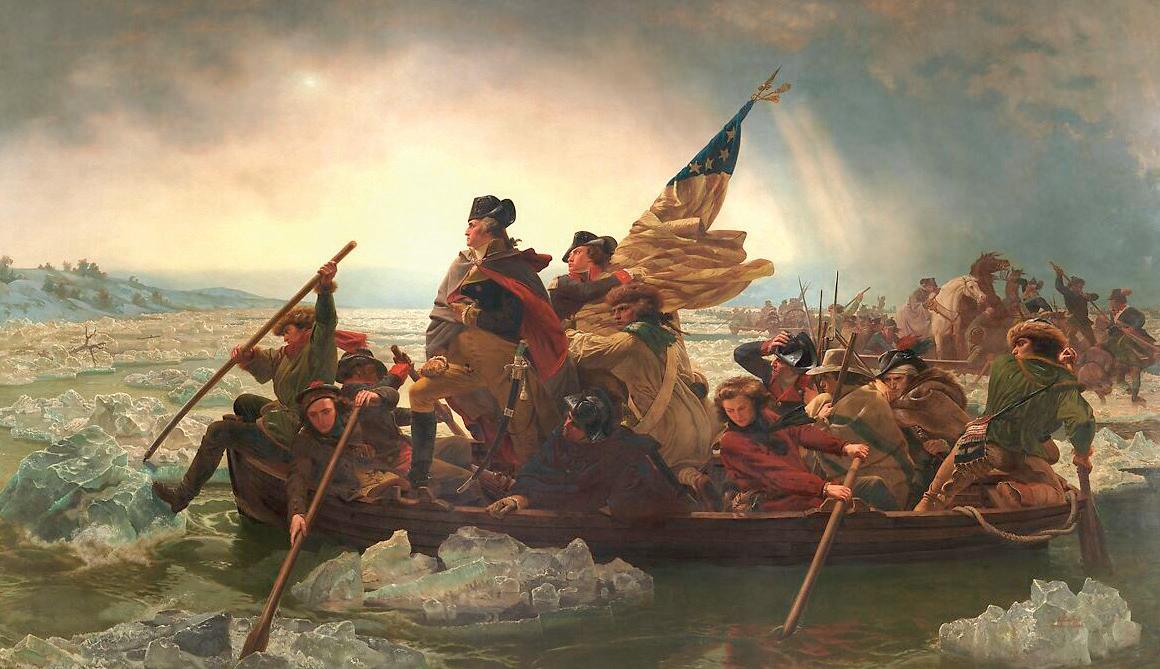
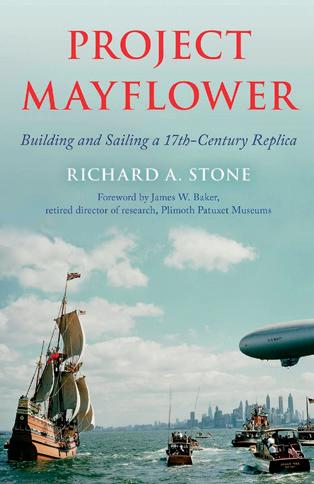
‘Project Mayf lower: Building and Sailing a 17th-Century Replica’
The Mayflower II is a replica of the ship that brought the Pilgrims to America in 1620. The oldest seagoing replica accessible to visitors allows millions to learn about it annually at its Plimoth Patuxet Museums home. Richard A. Stone’s book presents the Mayflower II’s history from its 1950s conception— the idea came from a grateful British World War II veteran—to its voyage across the Atlantic and its impact on visitors today.
Lyons Press, 2024, 288 pages
‘The
These pages are in the preview.
The Metropolitan Museum of Art in New York celebrates the 100th birthday of its American Wing as it reopens three floors of freshly curated galleries. A wide array of newly acquired works and loans juxtaposed with the well-known, foundational holdings will deepen viewers’ experiences. Gallery visitors will enjoy American art, history, and culture through objects from the mid17th century to the mid-20th century—from fine art to decorative objects, furniture to textiles, and architectural fragments to historical interiors. The ongoing exhibition opens on November 8, 2024. For more information, visit MetMuseum.org

‘The Demon of Unrest: A Saga of Hubris, Heartbreak, and Heroism at the Dawn of the Civil War’
Author Erik Larson combines factual detail with captivating narration in his latest historical work. He breaks down a macro-level event like the Civil War into bite-sized chunks with a storytelling style that readers will love. This book spotlights the people, places, and events that relate to the April 12, 1861, attack on Fort Sumter in Charleston, South Carolina. It’s a clever pre-war timeline punctuated by quotes, individual accounts, and humorous anecdotes.
Crown, 2024, 592 pages



TV personality Mario Lopez has thrived in Hollywood by branching out into multiple endeavors. Now, he’s bringing his family along for the ride
By Kenneth LaFave
ario Lopez is a host, actor, producer, author, and entrepreneur. He hosts TV shows and podcasts, does food criticism, and has his own shoe line. He’s been a dancer and sports commentator and ftness guru, and in a nod to his Mexican heritage, he recently became a small-batch tequila entrepreneur. Could becoming an astronaut be next?
“I’m working on that one,” Lopez said.
He’s joking. Sort of.
Lopez has not only come a long way in fve decades of a life lived, as he puts it, “at full throttle,” he’s gone in so many diferent directions it’s
hard to keep track. The two-time Emmy Awardwinning host of “Access Hollywood” is currently the host of the nationally syndicated radio show “On With Mario Lopez.” But that doesn’t begin to gauge the breadth of his active professional life.
Last year, Lopez launched a line of shoes that bears his name as its brand. And that tequila?
Lopez partnered with boxer Oscar de la Hoya to market it as “Casa México.”
Underneath the panoply of entertainment and business endeavors, who is Mario Lopez? He’s a guy who shot to fame in 1989 at age 16 in TV’s “Saved by the Bell.” He did 86 episodes as the deep-dimpled, mullet-sporting heartthrob A.C. Slater in that teen favorite, and another couple

dozen episodes in the sequel series, “Saved by the Bell: The College Years.” The dimples are still there. The mullet, long gone.
After “Saved by the Bell” came a slew of movies, of which “Breaking the Surface” (1997), the story of Olympic swimmer Greg Louganis, is probably the best remembered. Somewhere in the 2000s, there were also stints as both contestant and judge on “Dancing with the Stars” and several dozen episodes of the TV soap “The Bold and the Beautiful.”
Movies and TV eventually took a back seat to other endeavors. “There was just so much more to do, more paths to explore,” Lopez said. One of those paths ran through Manhattan and was called “Broadway.” In 2008, Lopez was cast in the Broadway revival of “A Chorus Line,” where he
These pages are in the preview.


Lopez a ccepts an Emmy a ward on beh alf of his te am for Outstanding Entertainment News
Program a t the
l D

performed eight shows a week for fve months. Also in the cast was veteran Broadway singer, dancer, and actress Courtney Mazza. The two met and fell in love. They married and had three children: Gia, 14, Dominic, 11, and Santino, 5.
The Mexican American Life
Lopez was born in 1973 in Chula Vista, California, near San Diego. His earliest memories include stories of the gangs who dealt drugs and violence there. With keen parental instinct, young Mario’s mother started him in dance classes at age 3 to keep the world of drugs and gangs away. As he entered the world of show business auditions, Mario’s minority status at frst worked against him. In the 1980s, the entertainment world was not brimming with Latinos.


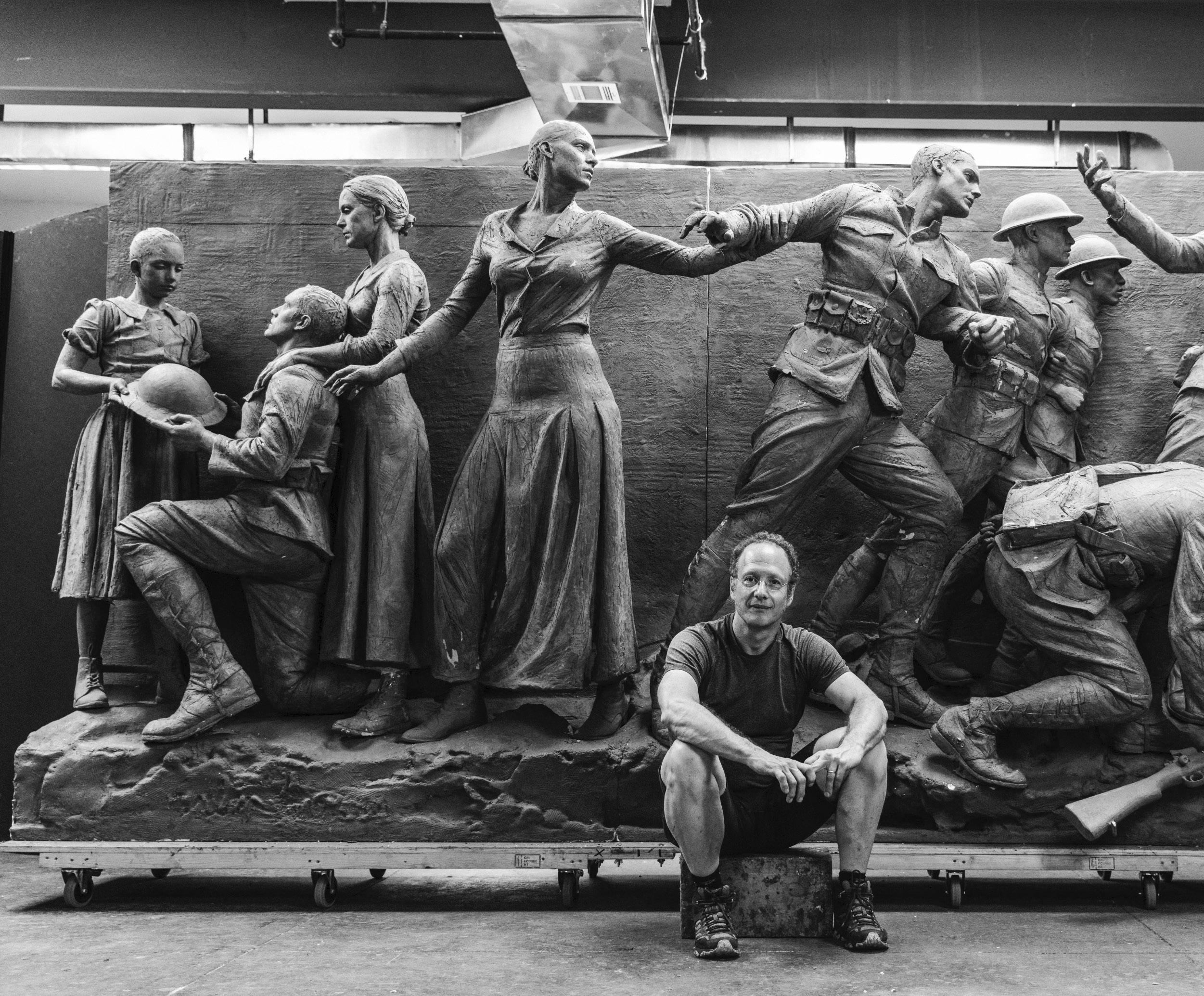
By Kenneth LaFave
Sabin Howard, who created the new national World War I memorial, is on a mission to revive beautiful art that can inspire a connection to the divine
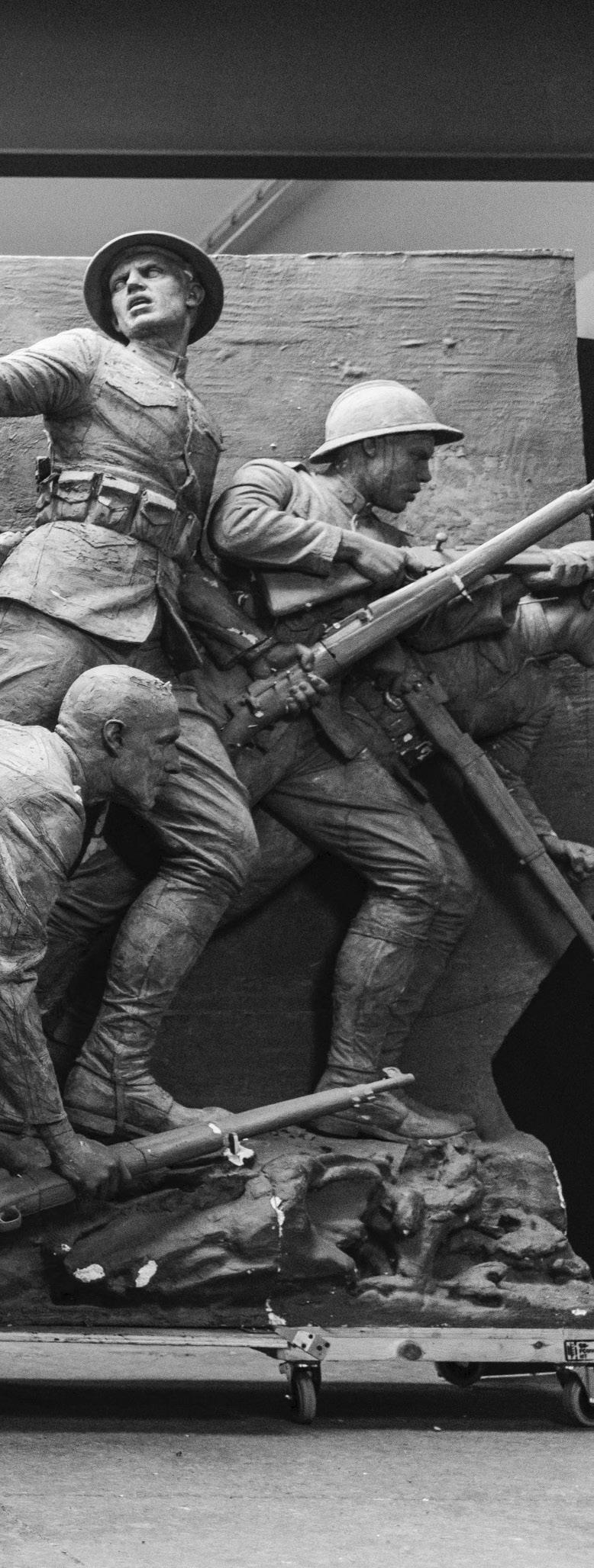


Stretching across 58 feet in Washington, D.C.’s Pershing Park is a bronze frieze that portrays “A Soldier’s Journey” through the demands and dangers of World War I. From lef to right, 38 life-size human fgures relate the experience of a single American soldier: his departure from home, the ordeal of battle and its afermath, and his return.
The massive work, unveiled in an illumination ceremony on September 13, was created by Italian American sculptor Sabin Howard, whose lifelong quest is to revive fgurative sculpture in the great
tradition of the Renaissance. The fact that he has made his case in a large-scale piece commemorating World War I is something Howard fnds deeply ironic.
“World War I marked the end of a philosophical thought process that the world is uni fed by a divine order. With the decimation of 22 million people, you move toward alienation and nihilism, the death of God and the beginning of the modern era,” Howard refected. “That moment had a huge impact on art. The idea that the fgurative is what art is all about was already starting

These pages are in the preview.
to slide away. Afer World War I, the fgure is no longer a part of the art world. The last moment that fgure is paid attention is [during the] Art Deco [movement], and afer that you move into abstract art.”
Art comes from experience, and experience is driven by the divine nature
of how the universe is assembled.
Sabin Howard, sculptor “
A hundred years later, Howard found himself commemorating in fgurative sculpture those sacrifces made during the very event that led to the erasure of fgurative art—ironic, indeed, yet somehow apt. “A Soldier’s Journey” is a powerful tribute to the Americans who fought in World War I, while its metaphysical reach “goes back to a previous age and speaks of our connection to the sacred,” Howard said. Its greatest potential: to spark what Howard calls “an American Renaissance revolution.”
Sabin Howard the man was born in 1963 in New York. But Sabin Howard the sculptor was born
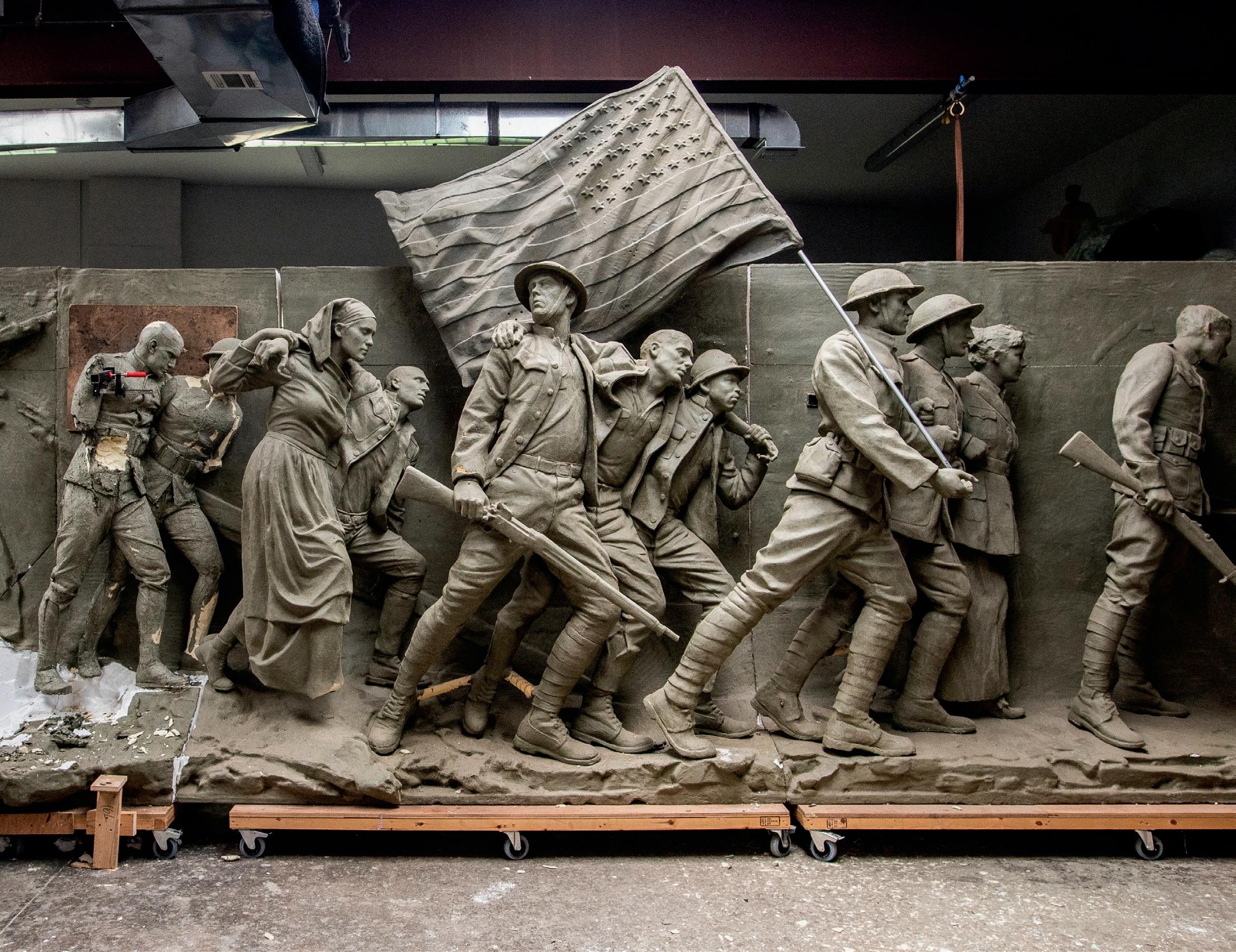
precisely at 4 p.m. on October 22, 1982.
“That was the moment I decided to become an artist. I was working in a cabinet-making shop, and I called my dad and told him. He said, ‘How long is this going to last?’ So far, it’s lasted 42 years.” Then 19, Howard did not know how to draw and was unfamiliar with the procedures of the art world. He called an art school to ask about requirements. “They said I needed a portfolio, but I didn’t know what a portfolio was,” he recalled.
All the same, Howard knew what he wanted. He persisted, earning degrees from the Philadelphia College of Art and the New York Academy of Art, and used what he learned in school to build upon what he had already experienced of the great masterpieces of Western art. Because his mother is Italian, he spent many formative years in Italy. There, “I was exposed to the great artists of the Renaissance, and I thought that’s what art is. I decided to make art like the Renaissance masters,


Auntie Anne’s® was born out of Anne Beiler’s desire to turn trauma into hope. Since selling the company, she’s on a mission to inspire people to boldly tell their stories
By Hazel Atkins
Auntie Anne’s is a 21st-century miracle,” declared Anne Beiler, the founder of international sof pretzel chain Auntie Anne’s. Beiler called her business miraculous not for its speed of growth, nor its popular pretzel recipe, but for how it gave hope to others.
Auntie Anne’s was founded out of Beiler and her husband’s personal grief and despair. Through their healing process, they realized they wanted to help other couples overcome their hurdles by
providing free counseling services. Auntie Anne’s was created in 1988 to fund that goal. “The reality of living out our vision has been surprising, stunning, and unbelievable,” Beiler said.
An Amish-Mennonite couple, Jonas and Anne Beiler lost their 19-month-old daughter Angela in a terrible accident in 1975. Neither of them had a vocabulary for grief. “We grieved silently,” she said. The couple began to drif apart.
Beiler was relieved when her pastor invited her to his ofce one day to talk. “I was shocked because I was actually able to talk about how I was feeling,” she said. But then, her pastor took advantage of her and began sexually abusing her. “That put me into a whole other trauma. I call it the dark world.” The sexual and psychological abuse continued for nearly seven years, throwing her into a cycle of guilt and shame. “I weighed 90 pounds, I hated who I had become, and I thought Jonas would divorce me if he ever found out.”
One day, she felt she could no longer hold the anger and pain inside. She confessed to her husband about what was happening. So began a journey through which Beiler learned that “when you begin to talk, you start to set yourself free. I believe that the principle of confession is really about being freed. My advice to anyone who is grieving or despairing is to fnd someone you can trust completely and talk until you’re done.”
It took a long time for Jonas and Anne to become a happy, functional, and mutually trusting couple again. Their struggles inspired Jonas to help other couples. A mechanic by trade, he decided to study psychology in his spare time, to understand what happened in their relationship. Then, he began ofering counseling, in a small way at frst, in their home and local church. He always wanted his services to be free because he didn’t want people to worry about afording it. “He was so passionate about this calling, but he wasn’t making any money,” Beiler said. So, in 1988, she bought a stand at a local farmer’s market to help fund his vision and pay the bills.
As an adolescent, Beiler had been a passionate baker. She was entrusted by her mother to bake 60 to 70 pies from scratch every week for her parents to sell at the market. Jonas was also an experienced baker who helped his mother in the kitchen from an early age. They both had a natural instinct for knowing how to adjust baking recipes, such as for dry or humid days.
The pretzels on the menu of the original market stand were terrible. The couple began experimenting with the recipe. “We kept peeking in the oven, and they didn’t look anything like the other pretzels!” Beiler said. When the pretzels were ready, she and Jonas shared one and looked at each other


We never advertised in any of our years running the company. … People just lined up. “
Anne Beiler, founder of Auntie Anne’s
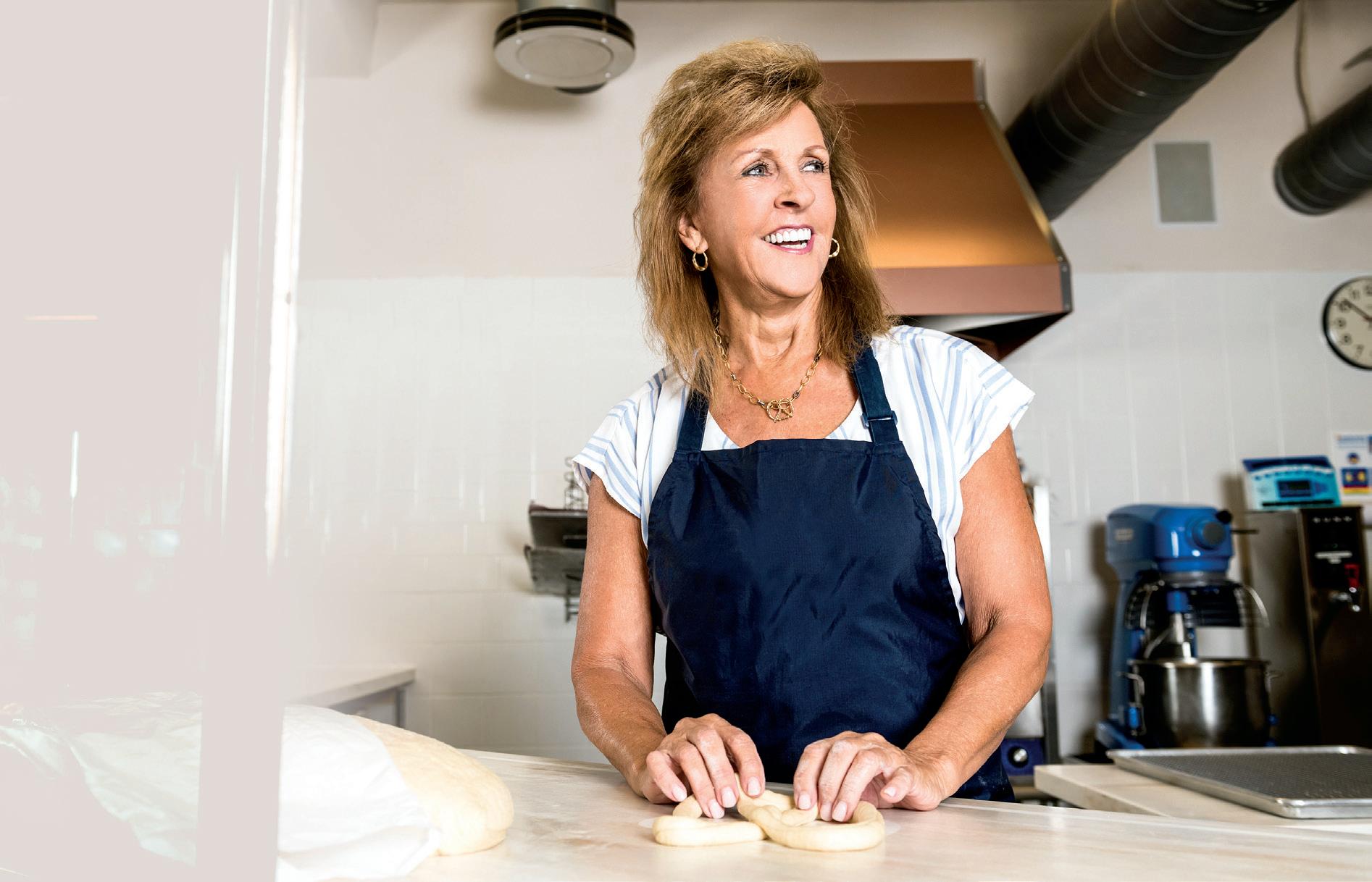
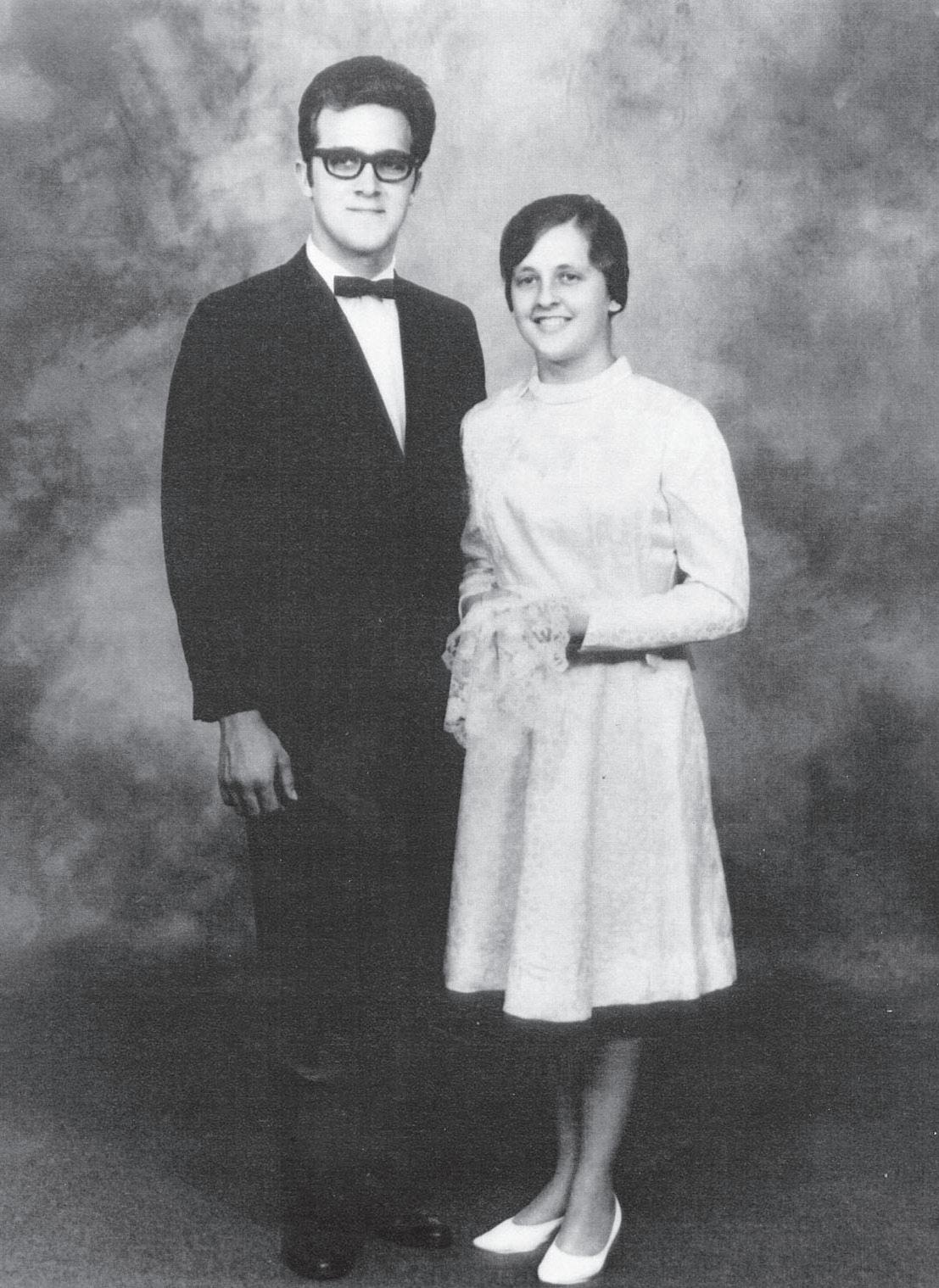
in amazement.
These pages are in the preview.
A customer came, bought a pretzel, and walked away. “We watched him,” she recounted. “He took a bite of the pretzel, stopped, looked at the pretzel, looked at the store, and walked back. He said, ‘What is this?’” And that was the start of Auntie Anne’s. “We never advertised in any of our years running the company,” Beiler said. “People just lined up.”
Within one year, they built two stores in Pennsylvania. “And then the next year, we built 12 stores, and the following year we built 35 to 40 stores,” she said. Over the next 18 years, the company spread across the country and internationally. Today, the franchise has nearly 2,000 locations across more than 25 countries.
Auntie Anne’s provided the funding for running Jonas’s counseling service, called Family Resource and Counseling Center, which operated until 2016 and serviced the greater Lancaster area. The company also supported local charities and causes, such as children’s hospitals, counseling programs, and community organizations— helping thousands of people over the years. “We were ecstatic about being able to give because we’d never been able to give much before,” she said. In the Amish tradition, children attend school until the eighth grade. “We had no plan, no formal education, and no money,” said Beiler. “We believed
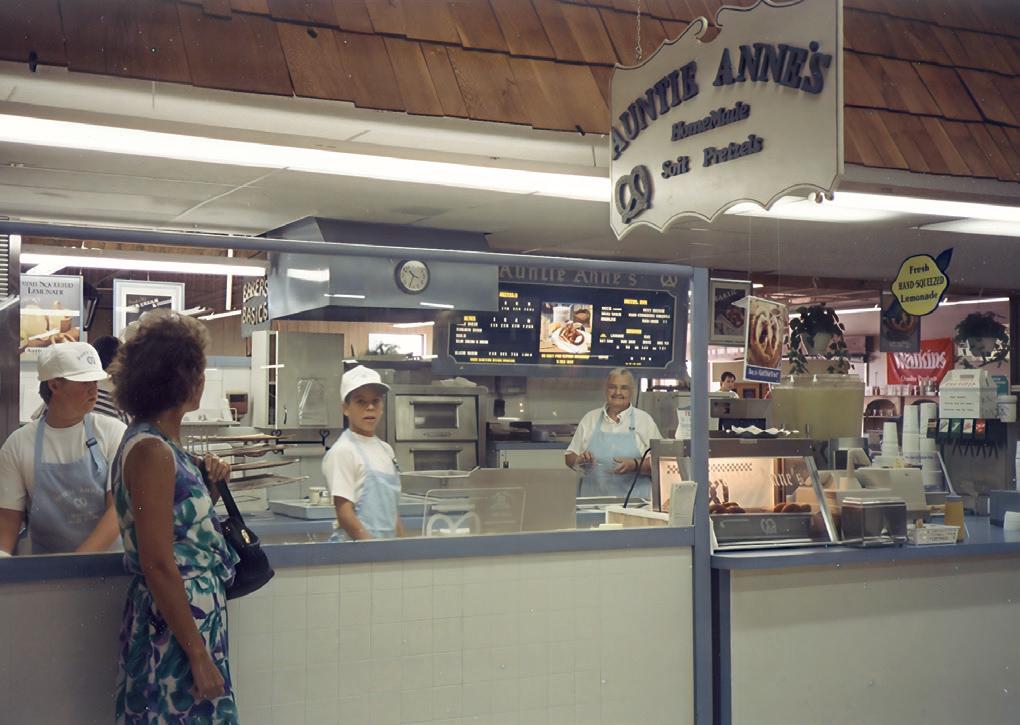
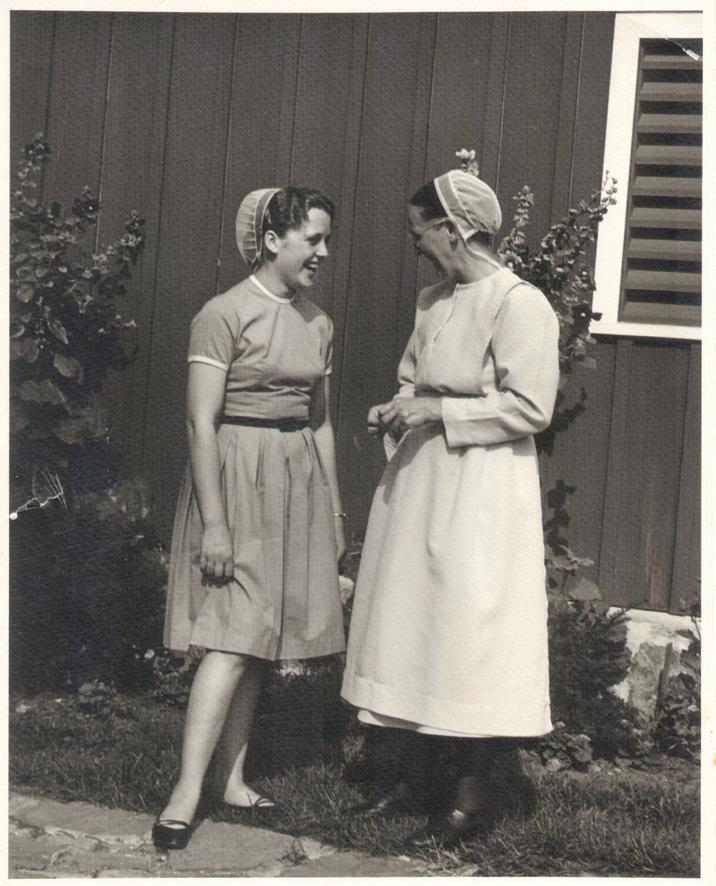

vision, she refused, believing that the key to growing sales was sampling.
Beiler’s path out of darkness inspired her to create a platform to help other women tell their stories. In 2009, she created a program called STORIESx8. In each cohort, eight women would gather weekly for eight weeks, to tell their stories without interruption, and thereby experience the freedom that comes from confession. “One 78-year-old woman came, so shy that she sat in the furthest corner with her head down,” she recalled. “At the end of week six, she said to me, ‘I think I might be ready to tell my story, but I can’t say it. Can I write it?’”
that God had called us to be light, and we brought our faith into the workplace,” she added.
Wherever she and Jonas traveled, she envisioned Auntie Anne’s stores everywhere. But she had no idea how to turn that into a reality. At frst, she didn’t know what franchising was or how to deal with the legalities. But she believed strongly in her product, her purpose, and her people— including by recruiting her brothers, who had more business experience, to help her develop the company.
She wanted everyone walking past her store to try a pretzel, just to experience what a good, freshly baked pretzel tasted like. Thus, she built sampling into the franchise agreement—requiring all franchisees to do it at their stores. When pressed to do conventional marketing on tele-
The lady was unable to read her story without tears, so Beiler ofered to read it on her behalf.
“Her story was incredible,” Beiler said, without divulging details due to the private nature of the story. The following week, the lady came in with her head held high and said, “I have had the best week of my life!” Though Beiler no longer personally runs the program (it is still available in churches and small communities), she devotes her time to speaking events where she encourages people to lif their burdens by telling their stories truthfully.
Beiler sold the company in 2005, wanting to take a break to focus on her family. She still can’t believe that she built such a big brand from scratch. The Auntie Anne’s miracle “is about how God intervened for us at very critical times,” she said.
Gen. ‘Billy’ Mitchell’s unheeded warnings ushered in the military’s air-powered warfare
By Jef Minick
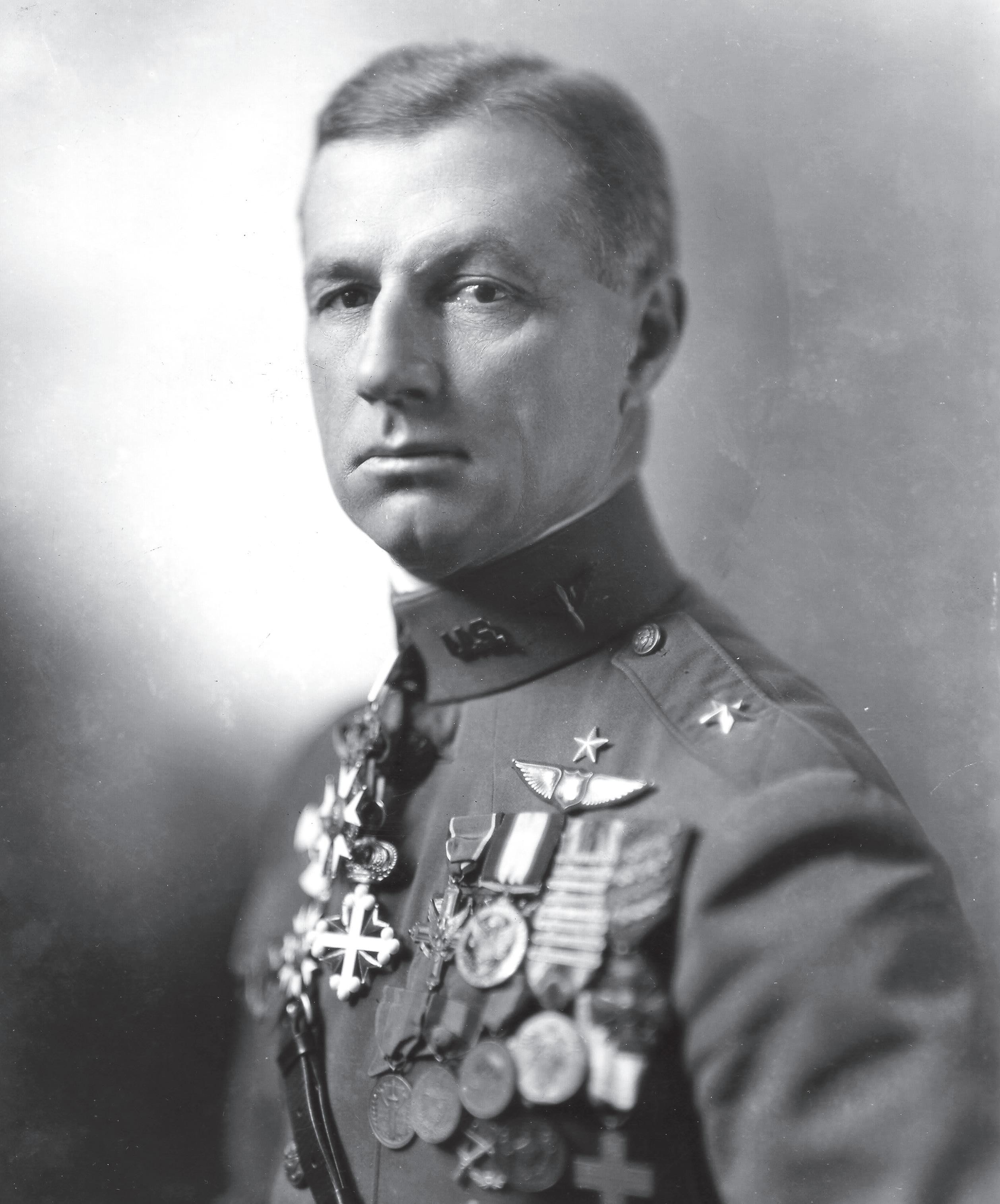
Shortly after noon on July 21, 1921, bombs from American aircraf exploded beside the former German battleship Ostfriesland, already damaged by several previous bombing runs. Within half an hour, the enormous ship began sinking by the stern, rolled over, and soon slipped beneath the waters of the Chesapeake Bay.
Observers on the nearby U.S.S. Henderson could scarcely believe what they’d seen. For the frst time in history, aircraf had sunk a battleship. Historian Roger G. Miller relates that some of the naval ofcers present, perhaps realizing what this event meant for the future of naval warfare, had tears in their eyes.
Meanwhile, in the cockpit of an airplane above the Bay, a vindicated Gen. Billy Mitchell was ecstatic over the results of this experiment, which he himself had devised. His predictions regarding the superiority of aircraf over the battle wagons of the feet were now visible to all. He was ushering in a new era in naval warfare. Or so he thought.
The Advocate of Air Power
William “Billy” Mitchell (1879–1936) grew up in Milwaukee, Wisconsin. A youth with a keen sense of adventure, he dropped out of college at age 18 and enlisted in the Army during the
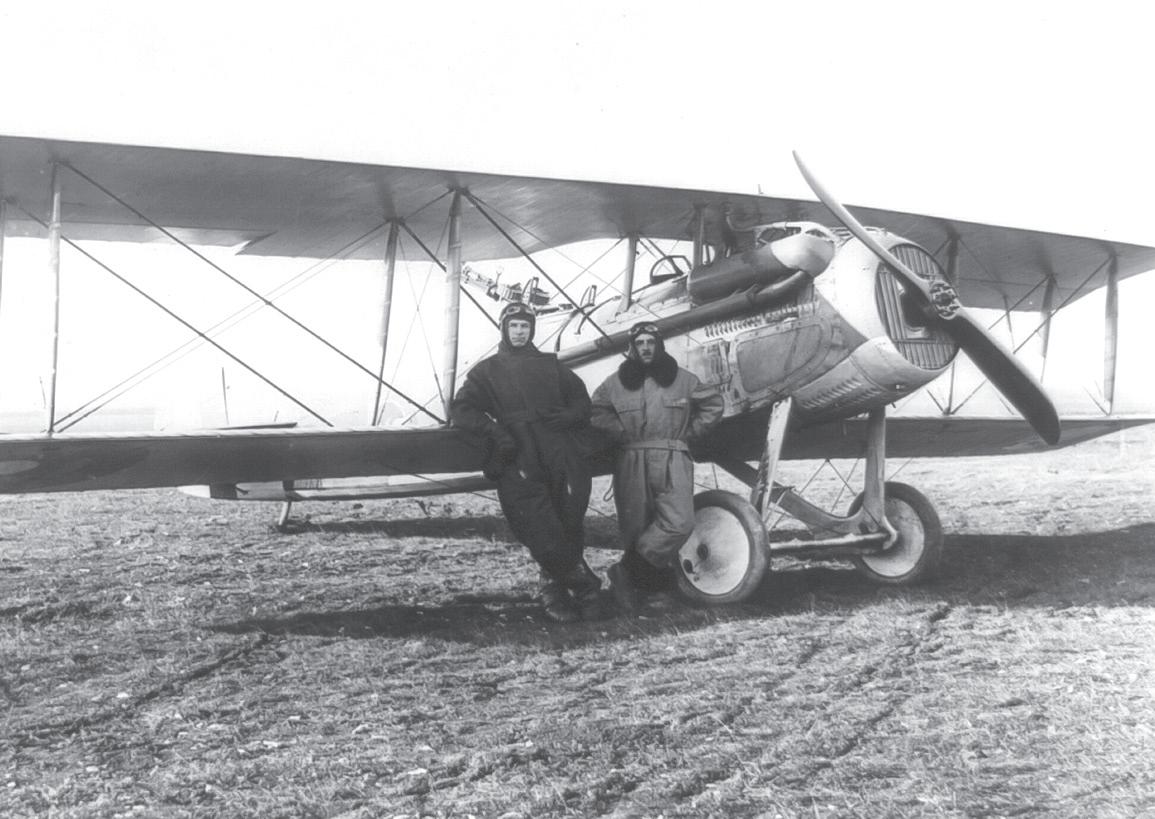
Spanish–American War. He was assigned to the Philippines, where he was soon commissioned as a lieutenant, in part because of the infuence of his father, a former U.S. senator. He later served in Alaska, where he helped construct the Washington–Alaska Military Cable and Telegraph System.
Back in the States, he carried out different assignments while becoming increasingly fascinated with aviation, predicting as early as 1906 that it would change warfare forever. In 1916, he


The court m artial of Mitchell (standing) in 1925. Because of his court m artial, he is often called a prophet without honor.
took private fying lessons, and with America’s entry into the war in Europe in 1917, he quickly showed himself a daring and resourceful pilot, rising rapidly through the ranks. In 1918, he had charge of over 1,400 American, French, British, and Italian aircraf during the pivotal Battle of Saint-Mihiel. By the war’s end, he had won numerous awards and medals and was the Assistant Chief of Air Service.
Following his return stateside, Mitchell remained active in the upper echelons of the Air Service. To him, it was clear that air power would soon dominate the battlefeld, not only on land but on the sea as well, and he pushed hard for an air corps separate from the other branches of military service. In those few years, he also made strenuous eforts to advance aviation as a multi-faceted military tool, helping to develop, for example, bombsights and aerial torpedoes, and he urged his Army pilots to aim at setting speed and endurance records.
The Critic and His Court Martial Mitchell had few qualms about irritating his superiors. Gen. John H. Pershing’s 1923 efciency report perfectly captures his famboyant personality: “This ofcer is an exceptionally able one, enthusiastic, energetic and full of initiative (but) he is fond of publicity, more or less indiscreet
These pages are in the preview.
as to speech, and rather difcult to control as a subordinate.”
The mix of these characteristics with his ofen strident advocacy for a separate air force brought some major pushback from both the Navy and the Army. Two years before his bombing demonstration on the Chesapeake, for example, Mitchell had testifed before a congressional committee that the Navy was ignoring the role of airplanes at sea in favor of constructing more ships. Secretary of War Newton Baker and then Assistant Secretary of the Navy Franklin Roosevelt immediately refuted these charges.
With the sinking of the Ostfriesland and other ships from the air, Mitchell would make his point, but his continued hectoring of his military and civilian superiors to do more, to build more planes and to create an independent air force, undoubtedly caused hard feelings and divisions that hurt rather than helped his cause.
In 1925, the Navy’s dirigible Shenandoah crashed as the result of a storm. Following this catastrophe, Mitchell publicly attacked both the Army and the Navy for what he saw as their “incompetency, criminal negligence, and almost treasonable administration of the national defense by the Navy and War Departments.”
With this pronouncement, he was charged with insubordination and court-martialed. He made
the courtroom a platform for his views on aviation, but he was nonetheless found guilty and was suspended from active duty for fve years. Rather than serve this sentence, Mitchell resigned from the Army in 1926 and retired to a Virginia farm, where he continued to write and speak about the pressing need for an air force and about the danger of falling behind other countries in aerial strategy and technology, particularly Japan.
The Pearl Harbor Prophet
Because of his court martial, Billy Mitchell is ofen called a prophet without honor in his own country. In addition to his farsighted take on military aviation, in one regard he also demonstrated his talent as a clairvoyant in a much more specifc way.
In 1923, the Army dispatched Mitchell to the Pacifc for a year to collect information and gather intelligence. Though he was likely sent on this mission to silence his ongoing criticisms, Mitchell took his assignment seriously and submitted a 323-page report on his return. Years later, this document, which had quite a bit to say about
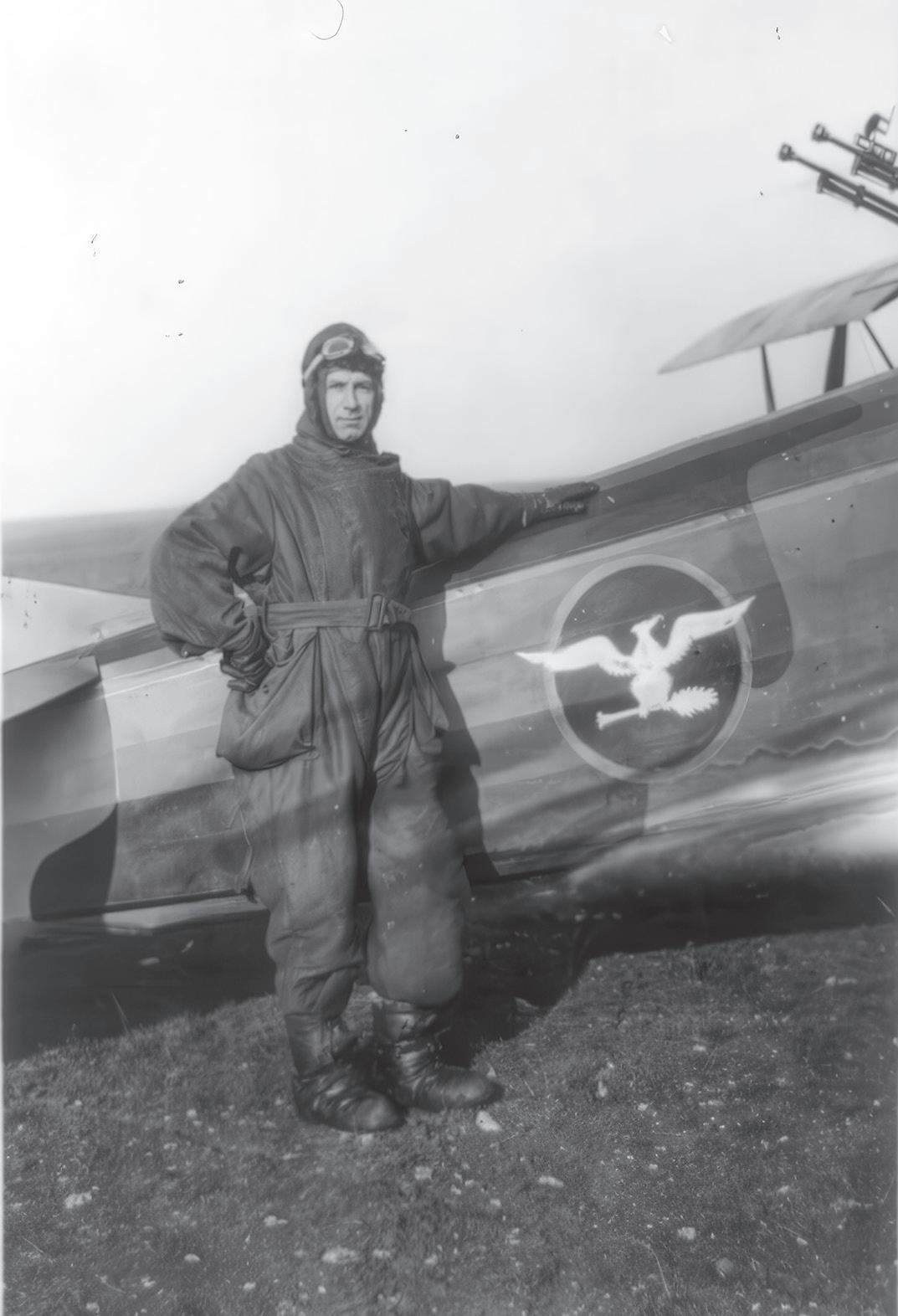
the Japanese military, predicted that Japan would attack Pearl Harbor by air and sea at some point in the future. Afer listing specifc points they would attack on the island of Oahu and on the Philippines, he then wrote:
“Attack will be launched as follows: bombardment, attack to be made on Ford Island [at Pearl Harbor] at 7:30 a.m. … Attack to be made on Clark Field (Philippine Islands) at 10:40 a.m.”
On December 7, 1941, the Japanese initiated such an attack, just as Mitchell predicted. He was of on his timing of these assaults by an hour or less. Moreover, as he had foreseen, the airplane played a crucial role in every Pacifc naval battle of the war, from Pearl Harbor to the surrender of Japan.
In 1946, 10 years afer his death and one year afer the Japanese were defeated, the U.S. Congress awarded William Mitchell a special Congressional Gold Medal. On the back of the medal are these words: “For outstanding pioneer service and foresight in the feld of American military aviation.”
The passionate prophet of air power had at last received his hard-won recognition.
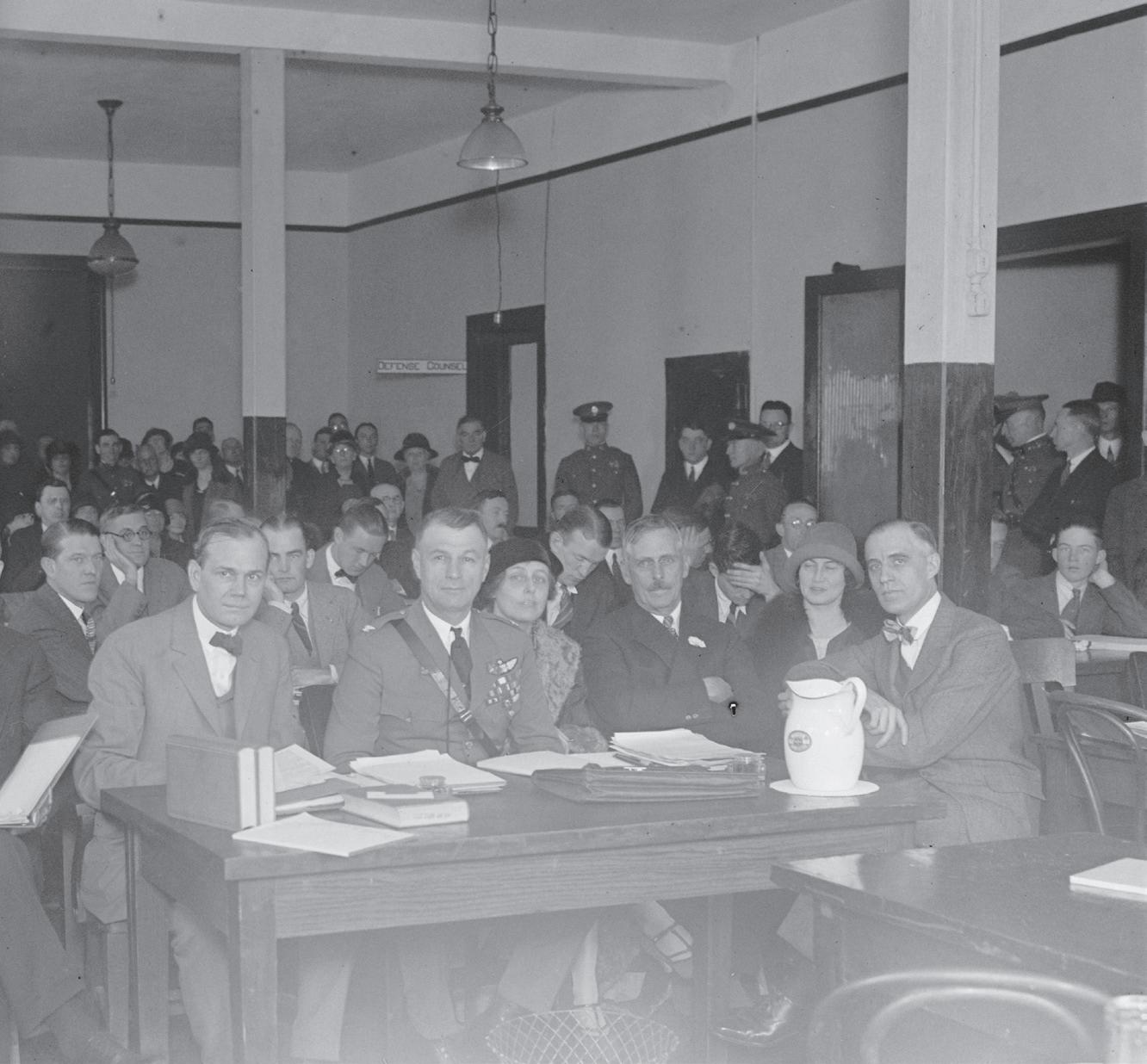

1961
President John F. Kennedy with First Lady Jacqueline Kennedy at the unveiling of the 1961 White House Christmas tree, in the Blue Room. The First Lady began the tradition of selecting a theme for the holiday tree.
The origins of cherished holiday traditions that have brought cheer and good tidings to the White House
By Andria Pressel
The White House is the seat of government, but it’s also a powerful cornerstone for cherished holiday traditions. Nowhere is this more evident than during the Christmas season.
Since the frst White House Christmas party was held in 1800, the president’s residence has shaped the way the season has been celebrated
by generations of Americans. From festive gatherings to Christmas trees with all of their lights and decorations, the frst families throughout history have transformed the White House into a symbol of national unity and holiday spirit.
Over time, these traditions have evolved and endured, becoming an integral part of the American Christmas experience.



December 1800
The first White House Christmas party was held by President John Adams and First Lady Abigail Adams.
1960s
Pastry chefs started making a white chocolate replica of the White House, usually displayed in the State Dining Room.
1969
A White House chef for the Nixons first started the tradition of making a German A-frame gingerbread house. At right, First Lady Pat Nixon with said gingerbread house.
1981
At left, the 2015 ornament honored Calvin Coolidge, who lit the first national Christmas tree in 1923, while President Abraham Lincoln was honored in 1999.
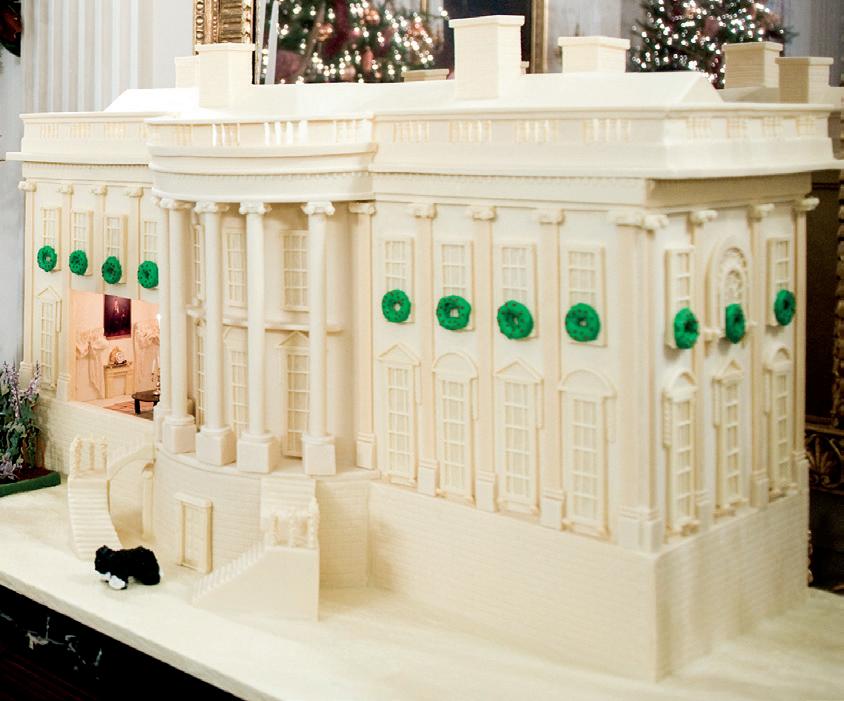
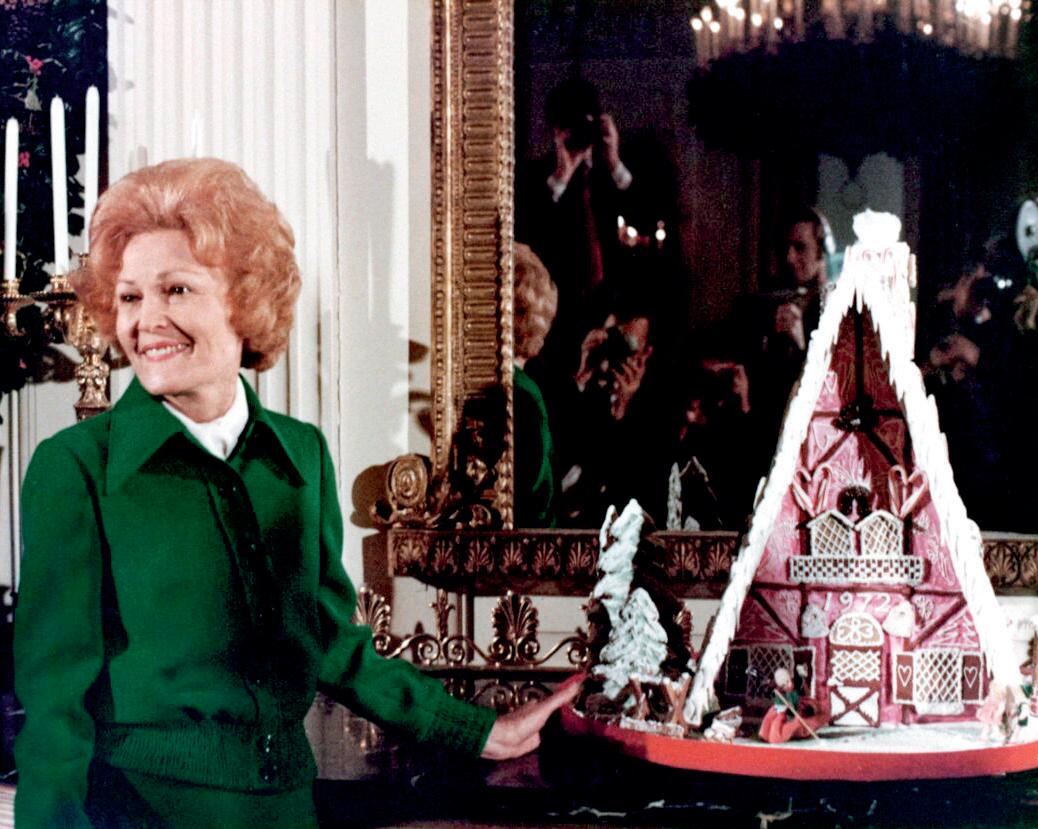
By Andrew Benson Brown
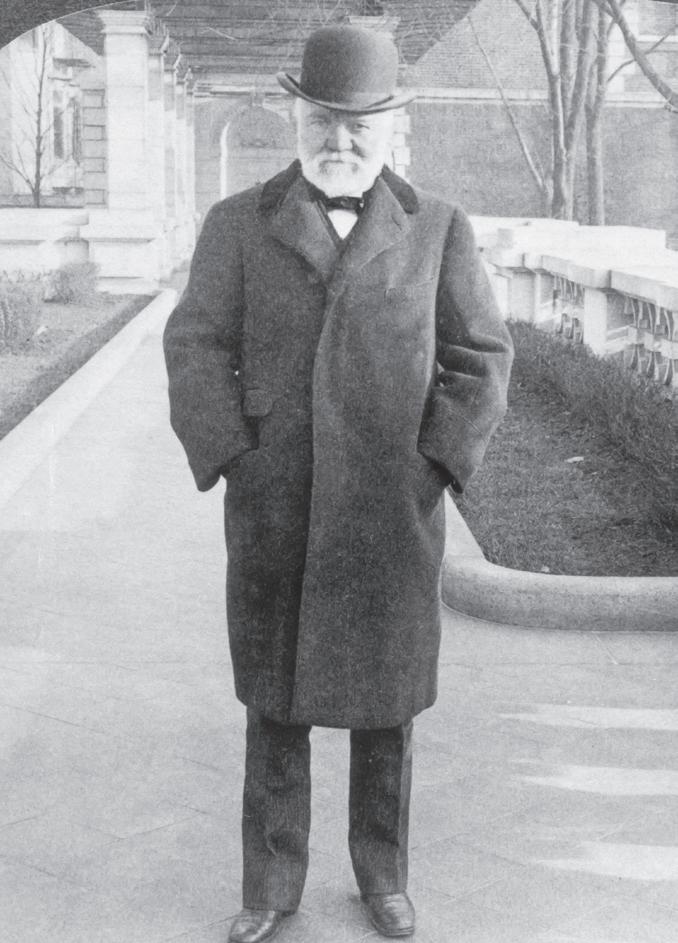
True or False Multiple Choice
1. The most popular wish that the Make-AWish Foundation grants to children with critical illnesses is visiting a theme park.
2. Afer he was diagnosed with brain cancer, former president Ronald Reagan and his wife Nancy helped support research into this disease.
3. Americans self-report that their most likely reason to give to charities is so they can get a tax break.
4. Most charitable donations in the United States come from individuals, not corporations.
Fill-in-the-Blank
5. In the flm “It’s a Wonderful Life,” George Bailey’s father gives him the advice: “All you can take with you is that which you’ve _______ away.”
6. Tisquantum, the Native American better known as ________, taught the Pilgrims of Plymouth Colony farming skills afer escaping slavery in Europe.
7. Andrew Carnegie, perhaps the most infuential philanthropist in American history, once wrote, “The man who dies thus rich dies _________.”
8. George Washington did NOT perform which of the following generous acts?
A) Funding colleges
B) Donating to orphanages
C) Founding public libraries
D) Emancipating his slaves in his will
9. A diary entry from Pennsylvania on December 25, 1745, records that the frst Christmas gifs given in America included:
A) Scarves, hats, handkerchiefs, and apples
B) Scarves, hats, neckerchiefs, and wooden toys
C) Hats, handkerchiefs, apples, and cornhusk dolls
D) Hats, neckerchiefs, pears, and whirligigs
10. In O. Henry’s classic short story “The Gif of the Magi,” what does Della sell to buy a gif for her husband Jim, and what does she receive?
A) Sells her jewelry and receives a new jewelry box
B) Sells her long hair and receives combs
C) Sells her heirloom dress and receives a sewing machine
D) Sells her violin and receives sheet music

These pages are in the preview.

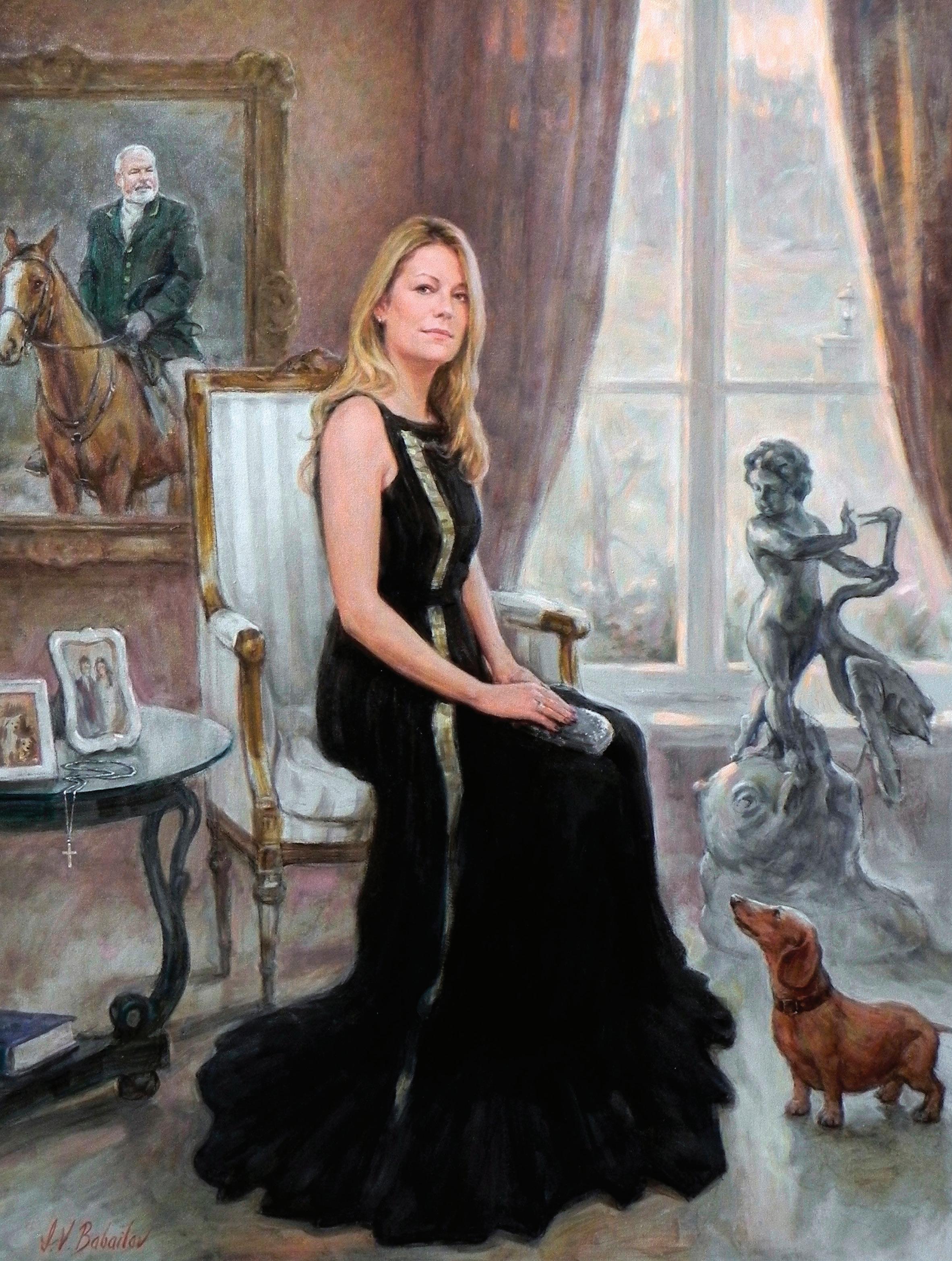
Today’s art is bound by the shackles of modernism. Let us consider the true purpose of art
By Igor V. Babailov
It isn’t a coincidence that the very last thing we ever expect to see in church is modern art or an abstract painting, such as a blank page, a single brick, or splashes of paint, as some sort of “intellectual” revelation to massage one’s ego. Why? Many of us would immediately answer that it just doesn’t belong there, and we are right, it doesn’t.
Since the Renaissance, realistic art played a leading role in education, and particularly Christian education. Whether it is in the Bible, churches, or Christian publications, an illustrated history of Christianity has been presented through realistic and life-like images, those that the viewer can relate to and understand. The impact of seeing a realistic depiction has been known and unquestionably obvious for centuries.
Christian thinkers, writers, and sacred realist artists are all theologians in their respective disciplines. The word “theology” is comprised of two Greek words, combined to mean the study of God—religious faith, practice, and experience in God’s relation to the world.
A strong work of realistic art can clearly convey a theological message, materialize the word of God, and serve as a powerful vehicle of communication to the people. Hence, artist-theologians such as Raphael, Leonardo, Michelangelo and other Renaissance masters painted religious works to educate, uplif , and strengthen faith.
The def nition of an artist was very clear in the past. Applied only to visual artists, it was also synonymous with skill, as the artist was

World-renowned portrait and figura tive artist Igor V. B ab ailov in front of his p ainting “Mercy—Who H a s to Suffer … and Why.”
someone who could do something that nobody else could do.
What an Artist Is
Today, in times of relativism, anyone can be labeled an “artist,” such as a cook, a karate expert, a dentist, a butcher, or anyone else. The term “artist” has lost its sacred meaning. We ofen hear from the defenders of modernism that “art can be
“
We know that we will never be as good as God in his skill, but at least we try to get as close as possible to that masterful perfection.
anything and anything can be art.” However, this just does not go well with our Christian heritage and culture, and portraying the Blessed Mother as a chaotic splash of paint or a deformed piece of sculpture would stand against our visual perception of the mother of Christ and, in general, Christian teachings about the sacredness of life and the beauty of creation.
A story comes to mind about a family of four children, driving on a road, along the felds with groves and rivers passing by. They were playing a game where each child was to name the best, in their opinion, artist in the world. One child said it was Picasso, another child mentioned Van Gogh, then the third child named Monet, and the fourth child sat quietly looking out of the car window and admiring the nature fying by. Then he said, “Look at the sun and the birds and clouds in the blue sky, and the shapes and colors of the leaves and all the diferent trees. I think that the best artist in the world is God, who created it all.”
Indeed, no one ever can create anything better than the masterpiece that he created. As an artist myself, I ofen think of that story, realizing that we realist artists are trying to reproduce the beauty of God’s creation on our canvases and, as artist-theologians, we explore the nature of the divine. That is what we do.
We know that we will never be as good as God in his skill, but at least we try to get as close as possible to that masterful perfection. In other words, we treasure and glorify the creation of life and its beauty. We go to schools and embark on traditional training in direct communication with nature to study all the “sciences in art,” as described by Michelangelo, Raphael, and many other great masters a fer them. We strive to enhance our skills in drawing because realistic
art is the only kind of art that requires skill, especially when it comes to exploring and capturing life in all its beauty and complexity, in the way it is and without exaggeration.
I was fortunate to have received the core of such traditional training, and unlike many debaters out there who are experts at expressing their opinions about art, I rely on my credentials, which give me artistic license, if you will, to support my remarks.
A child prodigy, I painted my frst portrait at age 4. I began my formal, 16-year (1974–1990) art education at the age of 9 and continued it at a special art lyceum for gifed children, followed by doctoral levels of study at the renowned Surikov Art Institute, all under the Russian Academy of Arts (founded in 1757), which recently elected me as an honorary foreign lifetime academician.
The curriculum of all my studies, besides such mandatory subjects as human anatomy, perspective, and others, also included the history of art from prehistoric to Renaissance to modern art. So, we students were well aware of all the art movements, styles, techniques, and technicalities involved in every period of art. In our broad art education, we acquired the power of knowledge, and the more we learned, the clearer was the realization that masterfully executed realistic works of art cannot be put on the same page with meaningless and helpless dribbles of paint that we unfortunately ofen see today in children’s schoolbooks.
These pages are in the preview.
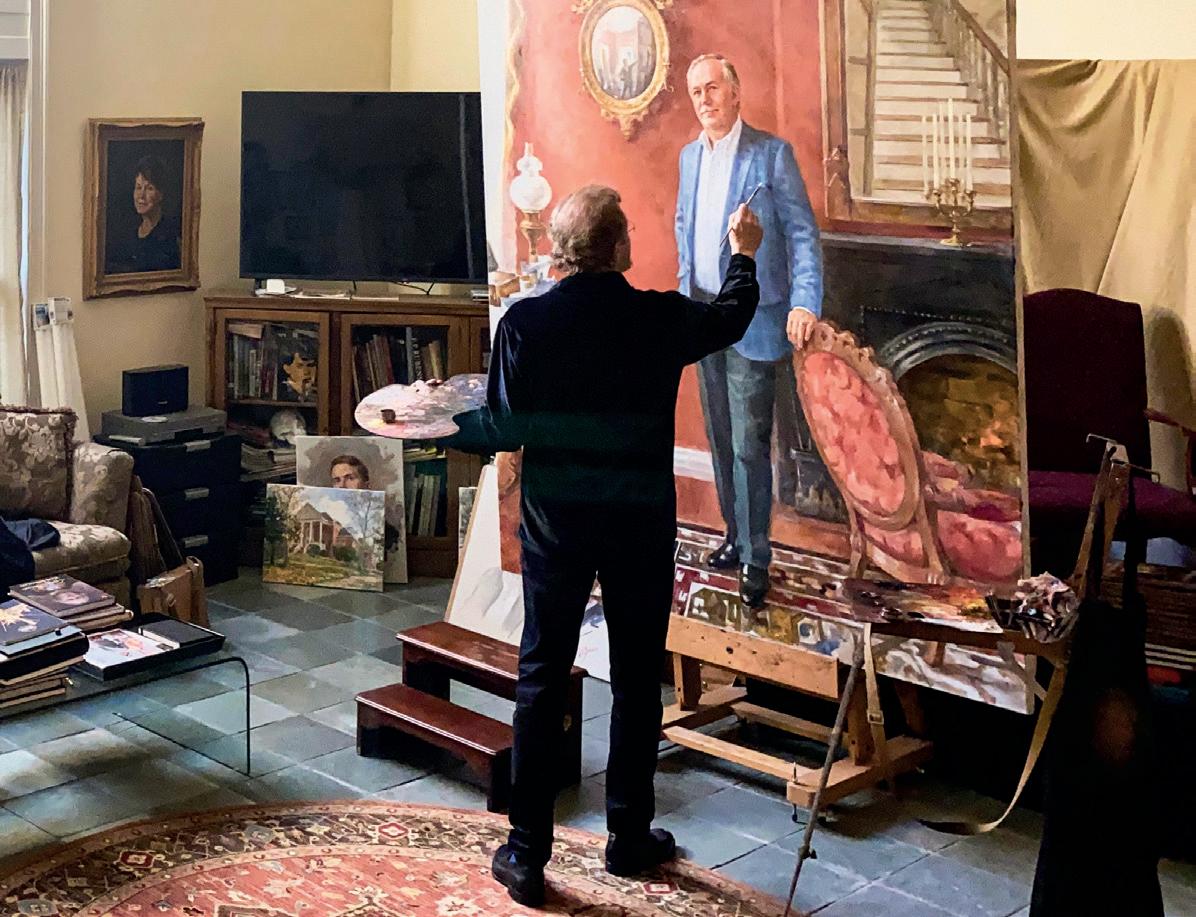

Teaching children through the art of relativism is where the damage to the mind begins, resulting in total confusion of thinking: If this one is a masterpiece and this one is also a masterpiece, what example should I follow? But in reality, it isn’t that complicated, as long as we remember that we live in a world of contrasts: pluses versus minuses, light versus dark, beauty versus ugliness.
The concepts of relativism are based on questioning what is already known, but what if they question the moral values that have helped humanity survive throughout its existence? Modern art goes hand in hand with relativism, where common moral sense is demonized and instead choice is seen as enlightened and socially
acceptable; ofen, tasteless, unethical, and even criminal behaviors such as abortion and euthanasia are championed as rights, choices, privileges, and freedoms of expression.
So, here is the question: If the fundamental element in modern art is moral relativism— where God’s perfect form in human anatomy and nature is broken and defamed, and death and ugliness are celebrated over life and beauty— then isn’t it the tool of the devil?
The answer is obvious.
I would like to expand further and use Genesis Chapter 1 as the basis for the moral value of realistic painting and its vital role in following God’s commandments and in promoting and preserving life as he created it. In Genesis Chapter 1, it says that God created heaven and earth when the
Jay Parini, author of ‘Robert Frost: Sixteen Poems to Learn by Heart,’ discusses the importance of Frost, his poems, and how they can help us navigate life
By Dustin Bass
When Library of America asked Jay Parini to write a book on the poetry of Robert Frost, the publisher chose the right person. Parini, the D.E. Axinn Professor of English and Creative Writing at Middlebury College in Vermont, is a Frost scholar, though not simply because he has studied the life and poetry of the poet, or because he has written his biography. Parini’s relationship with Frost is much deeper than that.
“I think that everything I know about life I learned from Robert Frost and from reading his poems,” Parini told me. It was a statement I didn’t expect. But, for me, that statement clarifed why in his new book, “Robert Frost: Sixteen Poems to Learn by Heart,” he calls Frost “our guide.”
Library of America had initially requested a book on 12 of Frost’s poems. Parini, however, believed the task could not be accomplished with so few. Like an old leather map, there was a chronology to Frost’s life and his poems that needed to be unfolded and followed. There were seasons in Frost’s life that required exploration. “The philosophical and spiritual depths explored in these poems are astonishing, ofen plumbing the darker sides of human existence,” Parini wrote in his book.
The power of Frost is that when we read his poems, we are not merely plumbing the darker sides of his existence. We are plumbing our own.
Of course, these “philosophical and spiritual depths” are not solely about our darker sides. Frost’s poems can guide us through every season of our life, if we take the time to read them, set them to memory, and keep them nestled in the corners of our minds.

“There is no season where Frost is not a poet of that season,” Parini said. “He’s a great winter poet, it’s true. Many of those great snow poems are death poems. But the spring poems are rebirth poems, and he has so many great poems there, like ‘Spring Pools.’ Then he’s a summer poet. And he’s a fall poet, ‘Oh hushed October morning mild.’ They’re never just dates on the calendar. They are always seasons of a life. Frost tracked the seasons and the seasons of the skin. His poems are all about the evanescence of life and how it passes, how it fades, but also how it is renewed again.”
At 76 years old, Parini has long set these poems to memory. They are there for his present and his future, just as they have been there for his
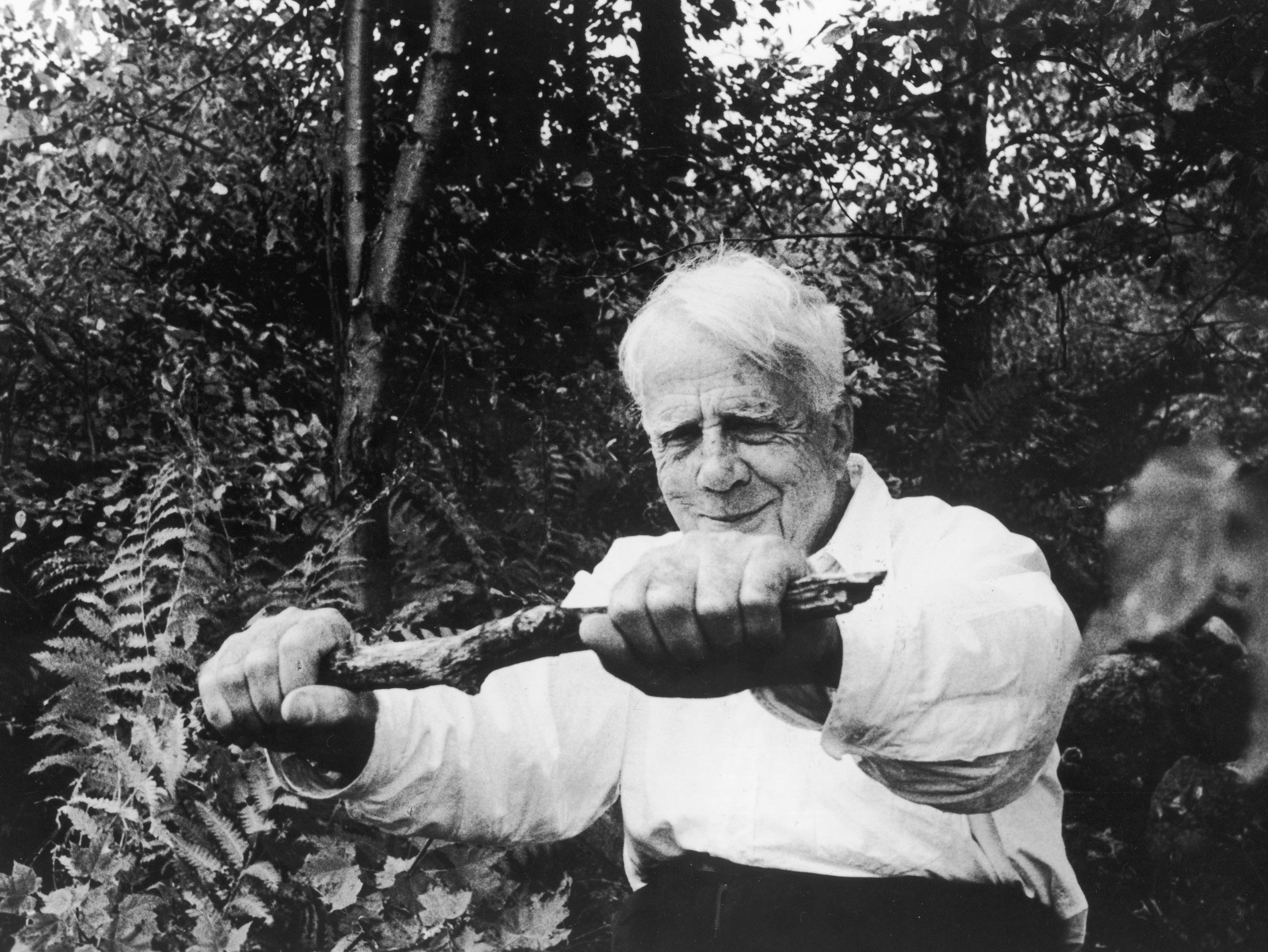
past, helping him understand the seasons of his own life.
“I learned how to appreciate the natural world and the agricultural round. I think that’s the most important thing,” he said. “The planting in the spring, the season of growth in the summer, a harvest, and this gentle decline, this blowing away of the leaves on the bare trees in November, then fnally the hibernation of winter, and how that is ultimately a time of growth and getting ready for spring. I think that my life has been based on the seasons.”
Robert Frost has been called a farmer poet, a folk poet, an intellectual poet, a naturalist poet, and a Romantic poet. Indeed, he has been a poet for
all people at all times. A true poet for all seasons. This is why, more than a century a fer his frst published collection of poems and more than half a century since his death, Robert Frost still transfxes us.
Parini explained that Frost was classically trained at Harvard and Dartmouth, studying the works of Theocritus, Horace, Virgil, and Shakespeare. He could read and write in Greek and Latin. All of that literary knowledge came out in his poetry, yet in the most subtle of ways.
“Frost doesn’t wear his learning on his shirtsleeves. Frost is a man of the people with a deep intellectual edge to him,” Parini said. “He knew exactly where to fnd that balance.”
It is why, as Parini wrote in his book, “Frost is ofen—too ofen—misread as a sweet homespun
JAY PARINI, author of “Robert Frost: Sixteen Poems to Learn by Heart.”
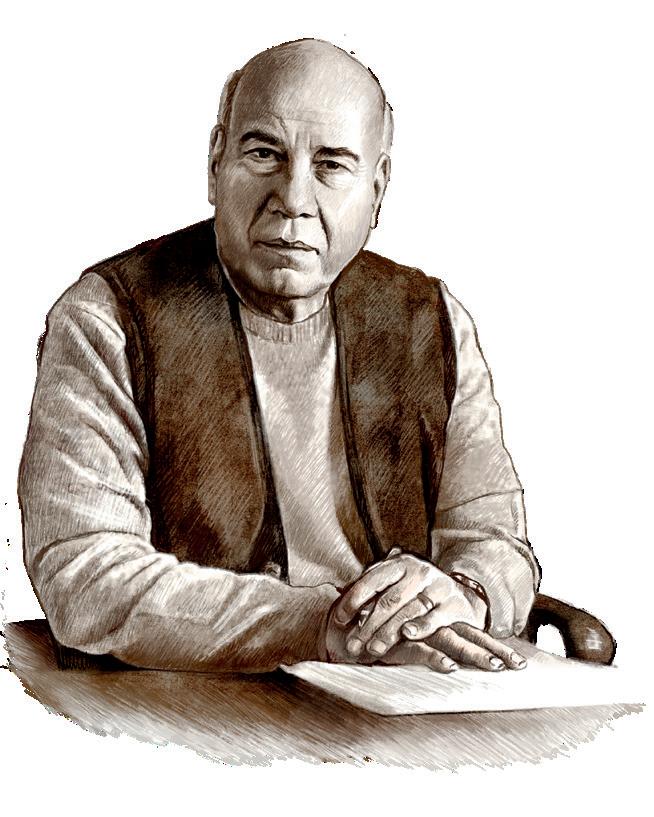
philosopher, a kind of folk poet.” Of course, this persona was created and presented on purpose. Frost never wanted to intimidate his readers, Parini claimed. At the same time, this “folk poet” persona was an accurate representation. Frost was a man of the people and a man of the earth. He didn’t just use his hands to write poetry; he used his hands to work the land, which explains why rural imagery played so prominently in his work.
Rural imagery is synonymous with Frost’s poetry: “For the grapes’ sake along the wall,” from “October”; “Whose woods these are I think I know,” from “Stopping by Woods on a Snowy Evening”; “The dead leaves lie huddled and still,” from “Reluctance”; “Those dark trees, / So old and frm they scarcely show the breeze,” from “Into My Own”; “The whir of sober birds / Up from the tangle of withered weeds,” from “A Late Walk”; and “Two roads diverged in a yellow wood,” from “The Road Not Taken.” But as Parini points out, there is hardly a Frost poem that doesn’t have a human angle to it.
Frost uses nature to frame the human experience. The poet had a gif for connecting people with the earth and the earth with his poetry. As Parini indicated, Frost divided life into seasons—from the birth of spring to the death of winter. The American poet wasn’t merely refecting life in the seasons; he was refecting the seasons of his life. Peering into Frost’s personal life, one sees tragedy at nearly every turn, from the death of his chil-
dren and wife to placing his sister and daughter into mental institutions. It seemed the poet experienced winter more than any other season. And Frost was never hesitant to invite his readers into those winter storms, requiring them to contemplate life’s harsh realities.
“So many of his poems scare the devil out of us,” Parini stated. “They’re pretty severe sometimes. ‘I have been one acquainted with the night.’ … That’s a terrifying poem in some ways. There’s no doubt that ‘Design’ is possibly the most terrifying poem in the English language: ‘What but design of darkness to appall?’ So Frost is not afraid to terrify us and make us really grapple with the meaning of life and mortality; but then again he turns right around and comforts us and says, ‘Here are your waters and your watering place. / Drink and be whole again beyond confusion.’ I think his poetry is ultimately a response to that confusion we all feel at times.”
Poems and Prayers
For these reasons Parini believes we should set to memory the poems of Robert Frost. He believes that Frost will do for us what the poet has done for him—be our guide for every season. But as noted earlier, these poems do not just plumb the philosophical depths, but the spiritual too. He believes that poems, good poems—poems that possess “intellectual, moral, and artistic strength” —are prayers.
“They are kind of a divine utterance. An attempt to speak to the universe, speak to God, whatever you think is your ultimate concern,” Parini said. “What are the Scriptures, but essentially poems? I always think about the Book of Psalms as the Norton Anthology of Ancient Hebrew Lyrics.
You look at Frost and he’s essentially writing his own Book of Psalms. There’s lamentations in Frost, there’s lamentations in the Bible. There’s the turning your eyes to nature. ‘I will lif up mine eyes unto the hills from whence cometh my help. My help cometh from the Father.’ You’ve got nature poetry in the Psalms. You’ve got love poetry. You’ve got everything. And you’ve got the same thing in Frost.”
In a world where people are seeking ways to “be whole beyond confusion,” perhaps the poems, or prayers, of Robert Frost are precisely what we need. For Parini, the poems he has committed to
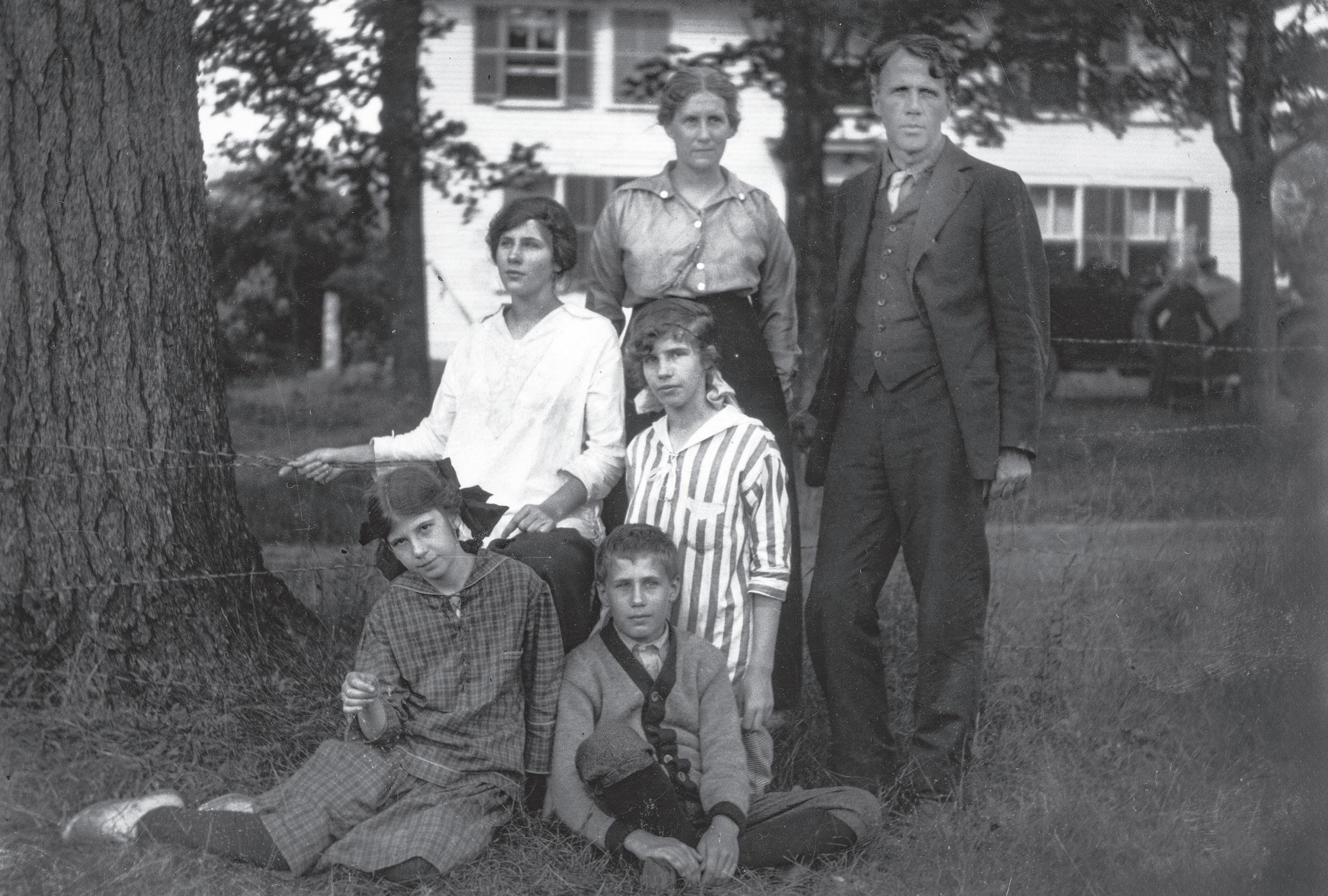
“
Frost divided life into seasons—from the birth of spring to the death of winter.
memory are thankfully not contingent upon a specifc season, or even a specifc decade. For him, they remain alive, renewed for each stage in life.
“I’m really stunned by how poems shif decade by decade in my own life. Poems that I thought I knew, I didn’t know. Lines I thought I knew when I was 20, now that I’m nearly 80, mean diferent things,” Parini said. “New meanings are becoming available to me as I begin to dig deeper into the lines and hear things underneath the lines that Frost may have intended.”
Frost’s poems possess that “intellectual, moral, and artistic strength” because the poet stored the best of the literary world in his own mind. He consumed the works of the great writers and philosophers, and those works consistently come through in his poetry.
“Frost had read everything. So reading Frost, I can hear buried in those lines echoes of Keats, echoes of Wordsworth, echoes of John Milton, endless echoes of Shakespeare, echoes of the Bible, echoes of St. Paul. Frost had all of these great texts in his head. He’s inexhaustible, just like all the great writers are.”
“You don’t want to memorize bad poetry,” Parini said with a laugh. “If it doesn’t really mean anything. If it’s not brilliant, you don’t want to memorize it.”
If readers wonder where to begin memorizing brilliant poetry, Parini has set aside 16 poems to get readers started. When it comes to choosing a guide for life’s seasons, as Jay Parini attests, there’s hardly a better choice than Robert Frost.

His father’s sacrifices in the Vietnam War showed him what it means to protect freedom in America and around the world
By Tony Batteford
It was a hot summer afernoon, and my father was enjoying his barbecue cookout with his grandchildren playing by his side. I was just a few weeks away from going back to college to fnish my degree, and I needed some advice about my future direction in life.
My father is a retired soldier who served his country during the Vietnam War, in the 10th Special Forces Unit. So, I went to him and shared that I was thinking about following his footsteps to enlist in the military. His eyes stared into the trees above him for some time before he came back to me. He said, “Son, whatever you decide to do, war is hell on Earth and it’s a serious decision. I want you to know this reality exists and to not take this decision lightly.”
I knew then that he encountered a fashback to the ugly memories of war and wanted to share his wisdom for my beneft. The look in his eyes said it all, and I decided to simply fnish my higher education. Since then, he shared more stories of his fellow soldiers and their sacrifce; how proud he was to have served his country; and the very lives he fought alongside, for America and for the nations fghting to acquire that very same freedom and liberty we sometimes take for granted. His words did not go unnoticed, and even as a young man, I absorbed
my frst taste of patriotism and understood that freedom and democracy are not a given. They are hard-fought human rights.
From inception, this nation has always fought for the diferentiating line between what is right and what is wrong, democracy and tyranny. Today, the clarity of this line is getting foggier by the day. Despite all the opposite political views and beliefs, we as a nation are looked upon as the leader for the free world, whether we like it or not. America is looked upon as the lighthouse more than we realize—a beacon and a symbol of hope, freedom, and liberty. Anyone keeping up with current events has witnessed hope eroding in zones within our own borders and around the world. There are countries in every continent struggling to maintain their freedoms or have lost them. Despite these manmade challenges, a symbol of hope was proudly displayed when countless Hong Kong citizens waved the American fag during the 2019–2020 democracy protests. The red, white, and blue waving proudly and high showed communist rule and the rest of the world that democracy and freedom are worth fghting for.
The internal strife we are facing today has a lasting efect on the principles set forth by our Founding Fathers. The sacrifces generations
Tony

From inception, this nation has always fought for the differentiating line between what is right and what is wrong, democracy and tyranny. “
before us made to ensure our freedoms are what laid the very foundation for this country, and what sets us apart from any other nation since civilization has been recorded.
We have a valued responsibility, not just for ourselves, but for the world we call home. How we fght amongst each other or the diferences in political views is not what matters. It’s what the United States of America represents and practices daily, and what global citizens are seeking to acquire—to simply live out their lives in peace without oppression is what so many cherish and seek.
Thus, I will never forget that day when my father looked away into those trees above him.
His thoughts were lost in the great sacrifces he made, and in his fellow soldiers who paid with their lives to ensure every American can continue to enjoy and practice democracy, liberty, and freedom, making sure the ever-present tyranny that surrounds us all never wins. We as Americans should never forget this honor to love what our country stands for.
Why do I love America? The honor, privilege, and responsibility I carry as a beacon of hope and freedom for the global community, cherished so deeply by those who must fght to preserve this for us all. America’s freedom was earned, not given, and must be practiced based on the principles our Founding Fathers have laid out for us. What I’ve deeply respected and cherished since my young adult life now must be passed along to the future generations of Americans.
Why do you love America?
What makes it worth celebrating? What moves you about the people and places that make up our country? Tell us in a personal essay of about 600 to 800 words. We welcome you to send your submission to: Editor@AmericanEssenceMag.com
By Robert Frost
Whose woods these are I think I know.
His house is in the village though; He will not see me stopping here
To watch his woods fll up with snow.
My little horse must think it queer To stop without a farmhouse near Between the woods and frozen lake The darkest evening of the year.
He gives his harness bells a shake
To ask if there is some mistake. The only other sound’s the sweep Of easy wind and downy fake.
The woods are lovely, dark and deep, But I have promises to keep, And miles to go before I sleep, And miles to go before I sleep.

These pages are in the preview.

A cooking school in New York offers a delicious vehicle for cross-cultural connection. 76 SOUTHERN HOLIDAY BAKING
Celebrate the season with recipes that have stood the test of time. 84
FARM- FRESH TREES
A New Jersey farmer is keeping an old-fashioned Christmas tradition alive. 90


3 festive, enduring recipes from a new compendium of the region’s most defining bakes
By Andria Pressel
Southern baking, writes veteran cookbook author Anne Byrn, is “quite possibly the frst and fnest style of baking America has ever known.” She makes the case for it in her latest tome of a cookbook, “Baking in the American South: 200 Recipes and Their Untold Stories.”
A ffh-generation Southerner, Byrn looked far beyond her home state of Tennessee. She researched each of the 14 Southern states, interviewed locals, and dug into library archives to fnd the best recipes and stories, both present and past. “I took a big-picture, step-back look at the South and considered how railroads, poverty, isolation, slavery, migration, and many other factors afected what people baked,” she said. “It was an ongoing project for more than three years. It consumed me!”
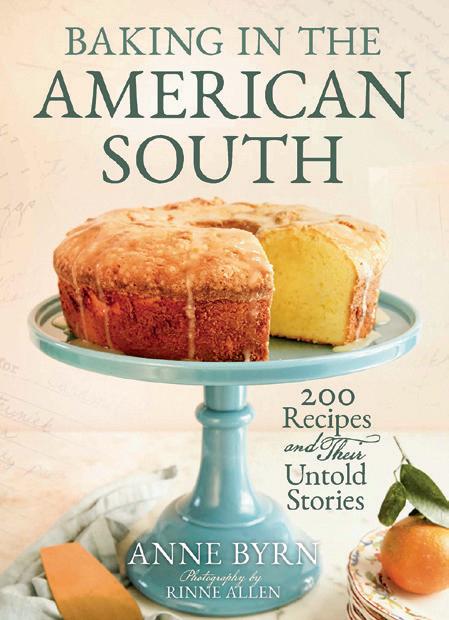
There was also plenty of another kind of consumption: the rigorous testing and tweaking of historical recipes for modern home cooks. “What was considered delicious in the 1930s might seem spartan today,” she noted. Part of the challenge was fnding modern equivalents for old ingredients and translating measurements—or lack thereof. “Grandmother likely had her own four scoop and knew how she measured a cup, level or rounded, or possibly she didn’t measure at all!”
Her perseverance was rewarded. The fnal collection, which includes entire chapters on cornbreads and biscuits, and sweets from obscure regional pies to famous Christmas cakes, tells a story of Southern baking, tradition, and culture. The recipes’ stories are woven into the lives of generations of Americans. Byrn shared three gems just in time for the holiday season.
Byrn and her grown children have a Christmas tradition of getting together to decorate sugar cookies and take family photos, “the tackier the sweater or apron the better,” she said. Some details have changed over the years: “Our mugs of cocoa have gravitated to flutes of bubbly.” Others are constant: her grandmother’s crescent cookies, punch cups of boiled custard (an old-time Tennessee specialty), and freshly baked yeast and sweet rolls, all putting a Southern stamp on their festivities.

IN THE FOREWORD to “The Jackson Cookbook” (1971), Eudora Welty wrote that each Christmas she baked a white fruitcake from a recipe her mother had gotten from a friend.
“What took me so long to bake Mrs. Mosal’s fruitcake?” I wondered, as I chopped the candied cherries and pecans and reached to the back of the cabinet for the bottle of whiskey. I have adapted the recipe only slightly, keeping the red and green cherries but using fewer of them. What you get is a lovely and festive fruitcake drenched in bourbon, and afer one bite, it will change your mind about fruitcake. Slice and serve with boiled custard.
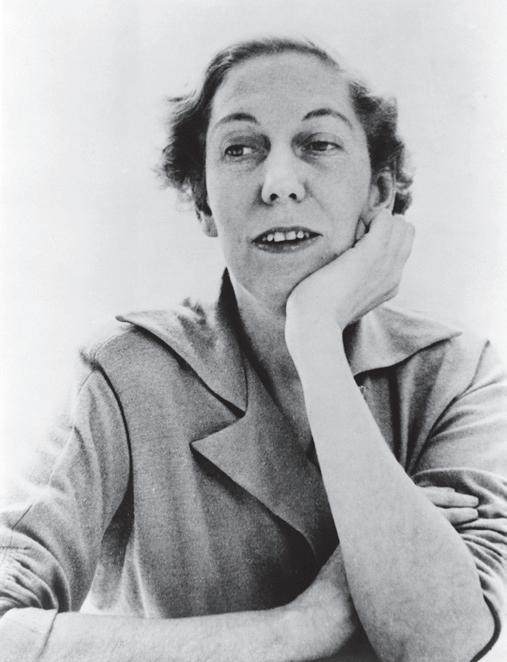
Eudora Welty (1909–2001), American novelist, wrote about sm all town life in the Mississippi delta, 1962.

Fruitcake making was once an annual afair, just like winterizing your house or putting chains on the tires of the car to prepare for snow days ahead. If baked and soaked in bourbon at Thanksgiving, the fruitcake would be ready for slicing by Christmas.
Plan ahead: Bake this cake several days to weeks before serving so it can soak in the liquor.
Fruitcake has many faces. In “Mrs. Porter’s New Southern Cookery-Book” (1871), Mary Elizabeth Porter mentions several kinds of fruitcakes: light (white), like this one, or dark (black), as well as Yankee (with butter and white sugar) or Confederate (with lard and molasses). Sally White fruitcake has coconut and almonds, and Japanese fruit cake isn’t really a fruitcake at all but more of a unique layer cake with a citrus and coconut flling popular in the Deep South.
Prep Time: 40 to 45 minutes
Bake Time: About 2 hours
SERVES 8 TO 10
Soft butter and flour for prepping the pan (see Note)
1 pound mixed dried fruit of your choice (currants, raisins, dried apricots, dried cherries, or red and green candied cherries)
2 cups (228 grams) pecan halves or chopped pecans
2 cups (240 grams) all-purpose flour, divided
12 tablespoons (1 1/2 sticks/170 grams) unsalted butter, at room temperature
1 cup (200 grams) granulated sugar
3 large eggs, at room temperature
1 teaspoon vanilla extract
1 teaspoon baking powder
1/2 teaspoon ground nutmeg
1/2 cup bourbon or brandy, plus more for soaking the cake
Heat the oven to 250°F, with a rack in the middle. Grease and flour a 9-by5-inch loaf pan
These pages are in the preview.
Chop the fruit into small, uniform pieces, 1/4 to 1/2 inch in size. Place in a small bowl. Chop the pecans into the same size pieces and place in a separate bowl. Toss the fruit with 1/2 cup of the flour. Set aside.
Place the butter and sugar in a large bowl and beat with an electric mixer on medium speed until light and fluf y, about 3 minutes. Scrape down the sides of the bowl. With the machine running, add the eggs, one at a time, and beat on low until incorporated. Add the vanilla and beat until blended.
Whisk the baking powder and nutmeg into the remaining 1 1/2 cups flour. Add the flour mixture alternately with the bourbon or brandy to the butter mixture, mixing on low until just blended. Fold in the fruit and pecans. Turn into the prepared pan.
Bake until the cake is firm and
very lightly brown, about 2 hours. The interior temperature should be 200°F on an instant-read thermometer. Remove from the oven and, while hot, drizzle over additional bourbon or brandy. Let the cake cool in the pan for 30 minutes. Run a knife around the edges of the pan, then invert the cake once and then again so it cools right side up on the rack. Let cool completely before serving, about 1 hour.
To store, wrap in clean cheesecloth. Place in a metal tin and store covered in a cool place for up to a month. Each week, pour another 1/4 cup bourbon or brandy over the cake, if desired.
Note: Back when my mother and grandmother baked fruitcakes, they would grease the loaf or tube pans with butter and then line them with brown paper. I remember seeing the paper peeled of the sides of the baked fruitcake and my mother telling me it was to protect the cake from overbaking and keep the edges soft.
I GREW UP WITH BOILED CUSTARD ON CHRISTMAS EVE, served in punch cups with fruitcake and pound cake. It was a Middle Tennessee holiday tradition, a gentler version of eggnog, and you can make it without any alcohol, as I am sure my Presbyterian grandmother did.
You’re not going to fnd it in every Southern cookbook because it is so regional. But you will fnd it in Tennessee and Mississippi cookbooks, and the recipe I settled on is from “Being Dead Is No Excuse” (2005) by Gayden Metcalfe and Charlotte Hays. They call it Bourbon Boiled Custard, but as I said, not everyone puts bourbon in it. But if they do, it’s gonna be good, especially with Mrs. Mosal’s White Fruitcake, baba au rhum, Christmas black cake, and festive cookies.
Prep: 20 to 25 minutes
Cook: 10 to 14 minutes
Chill: At least 4 hours
SERVES 8
1 cup (200 grams) granulated sugar
2 tablespoons all-purpose flour
4 large eggs
Big pinch of salt
3 cups whole milk
1 cup heavy cream
2 teaspoons vanilla extract
1/4 cup bourbon (optional)
Place the sugar and flour in a large, heavy saucepan or in the top of a double boiler (see Note). Whisk in the eggs and the salt until smooth.
Place the milk in a separate saucepan and bring to a simmer over medium heat, letting bubbles form around the edges of the pan, 3 to 4 minutes. Remove from the heat and stir in the cream.
Ladle 1/2 cup at a time of the warm milk mixture into the egg mixture and whisk to combine. Place the pan with the eggs over low heat or over
simmering water in the double boiler. Stir with a flat spatula until the mixture creates steam and thickens enough to coat a spoon, 10 to 14 minutes, or 170 to 175°F on an instant-read thermometer.
Remove the pan from the heat and pour the custard into a glass bowl. Stir in the vanilla and bourbon, if desired. Place in the refrigerator to chill for at least 4 hours. Serve as a beverage in small cups or as a sauce.
Note: If you have a heavy copper pan for making sauces, it’s perfect for this recipe because it’s thick and will protect the eggs from heating too quickly. But if you do not, use a double boiler—or what’s known as a bainmarie—where you place a bowl or insert on top of a saucepan filled with simmering water.
The trick is to keep the water at a simmer, not a boil, and to make sure the water is not touching the bottom of the bowl or the insert holding the custard. It takes a little longer to thicken with the double boiler, but every pan and stove is di You are looking for a just-thickened custard that coats the spoon. It will thicken more as it cools.
Anne Byrn shares five timeless tips from bakers past: Repeat favorites, especially for the holidays. People remember recipes that are repeated annually. And grandmothers were good about that.
Bake with your senses, using touch and your sense of smell to determine if a cake is done.
Let little people come into the kitchen and watch and help.
Don’t scrimp on ingredients. I was told stories of baking during the war years and using precious white sugar. I was told about how people of Appalachia would save money to bake a cake to bring to a holiday supper. People have scrimped and saved in order
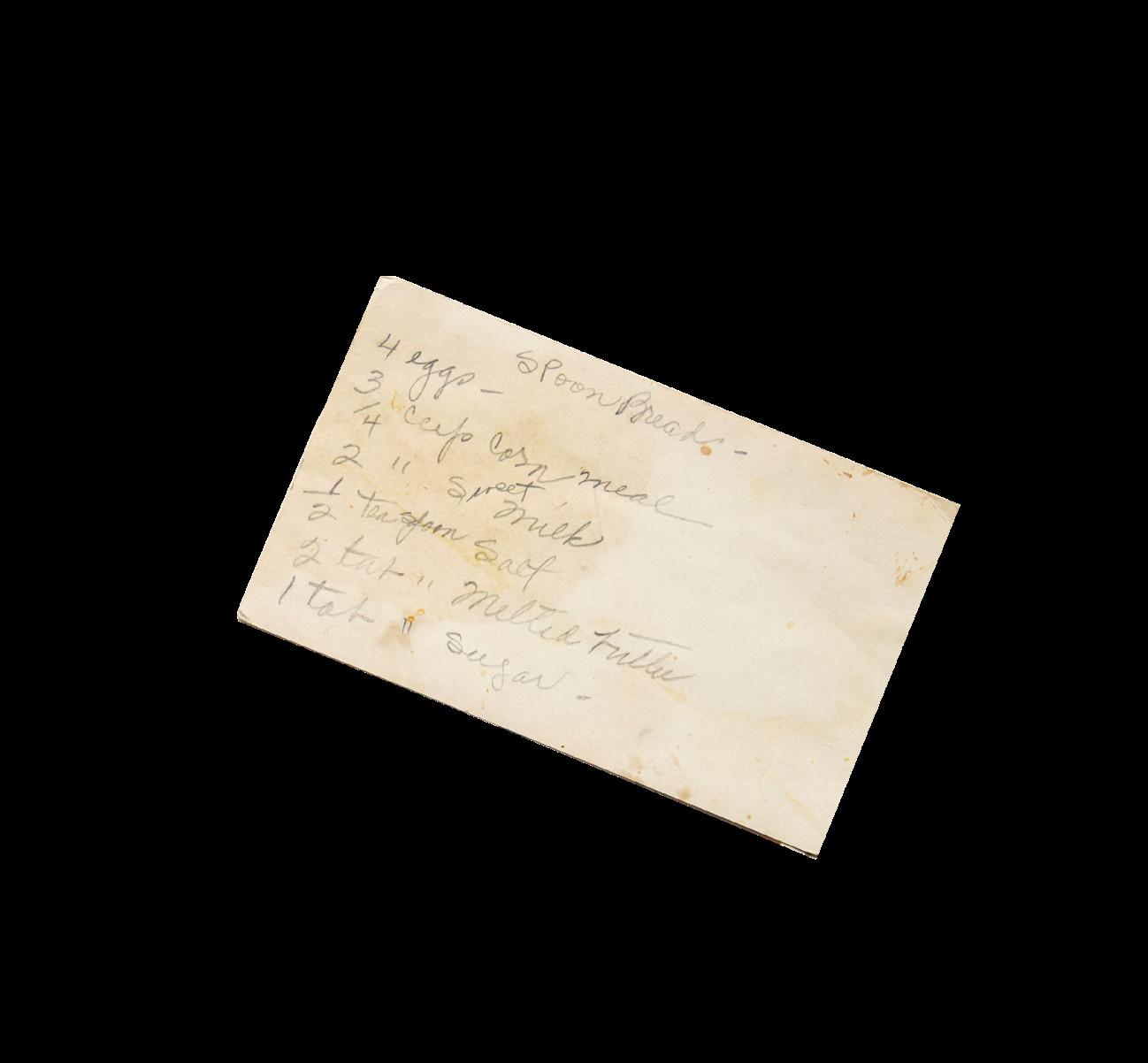

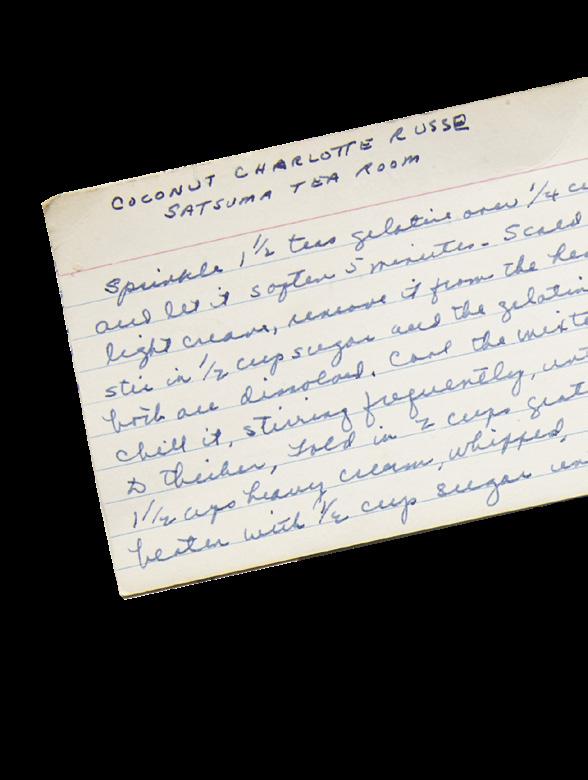





IMPORTANT:
Everything a magazine should be—a perfect gi f delivered right to your gi f ee’s door.





